The next day was free, but I wanted to do a little bit of what I love to do in tropical destinations, which was to walk on the beach in the early morning. So, that’s exactly what happened and my walk lasted for almost an hour and a half. It was clear that it was low tide and you could clearly see how much the water had ebbed.
 Beach on the west side of Nungwi village
Beach on the west side of Nungwi village
Namely, in this part, above the beach consisting of fine, white sand, you can see an elevation, which I assume is some kind of a coral reef from the past. All permanent buildings are constructed on that elevation, not on the beach itself. In addition, you can see where the sea water, tides and waves gently “erode” the solid matter that makes up this part of the coast.
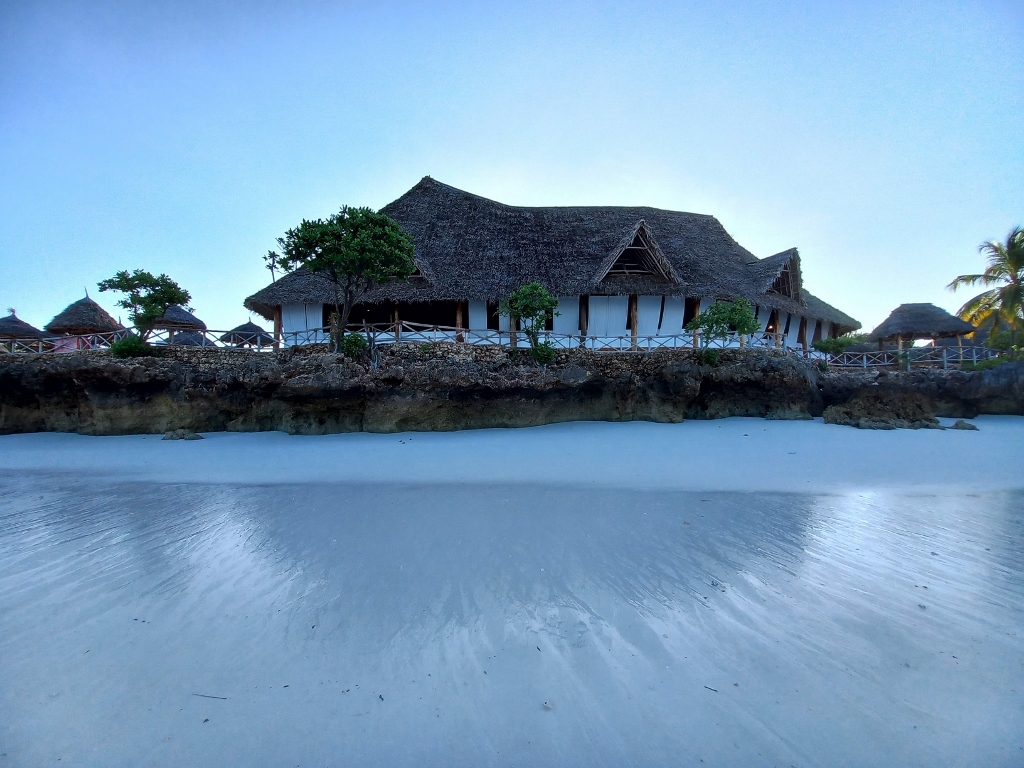 Beach on the west side of Nungwi village
Beach on the west side of Nungwi village
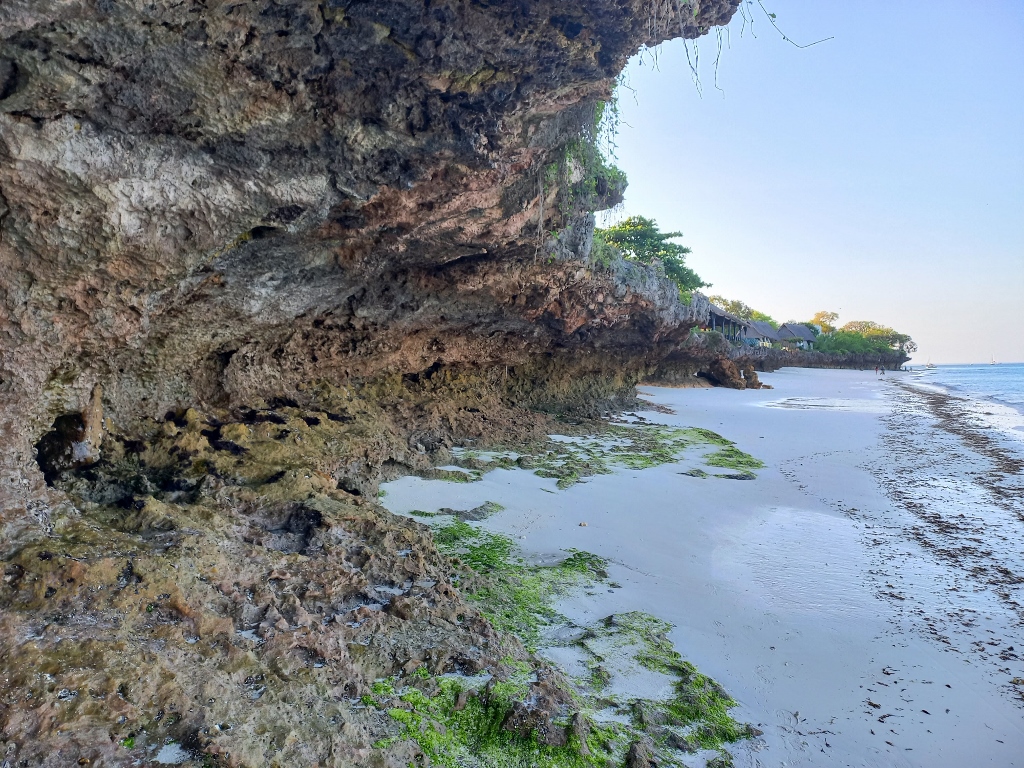 Beach on the west side of Nungwi village
Beach on the west side of Nungwi village
 Beach on the west side of Nungwi village
Beach on the west side of Nungwi village
After that wonderful early morning walk, I went to breakfast and stayed there for a very long time. So much so that I even drank three coffees, which is very untypical of me. The main reason for this was that the hotel restaurant was right on the beach, or rather above it, if you like, and the view was wonderful. I relaxed and enjoyed myself so much that I hated to move, hence the coffee drinking.
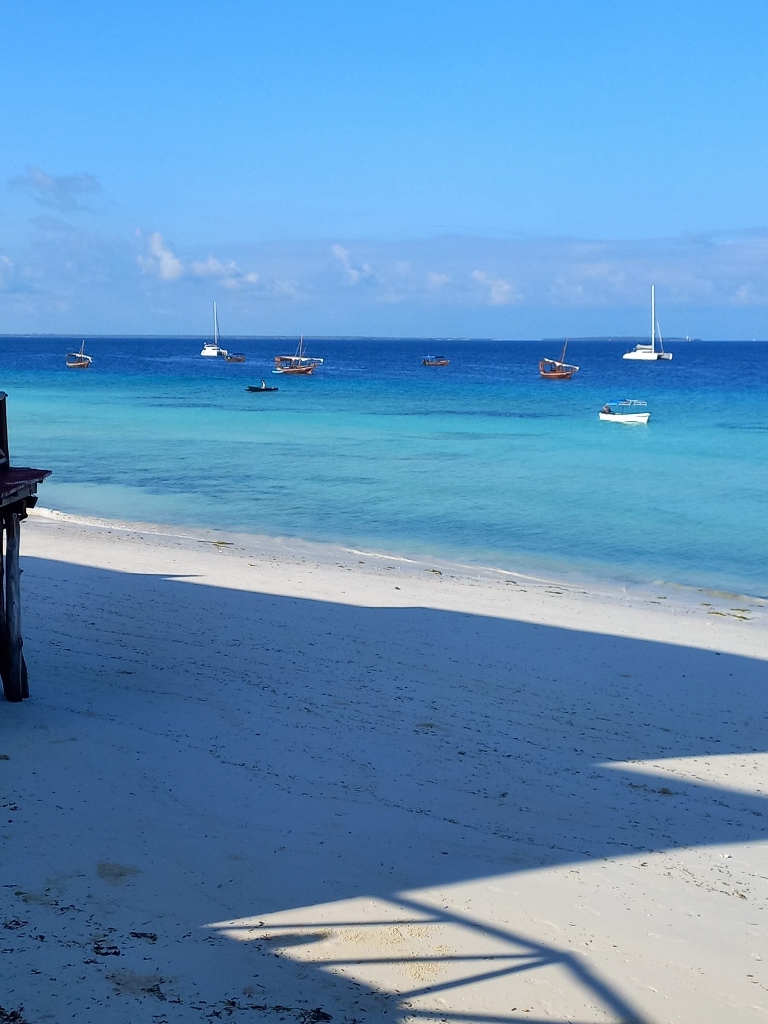 Beach in Nungwi
Beach in Nungwi
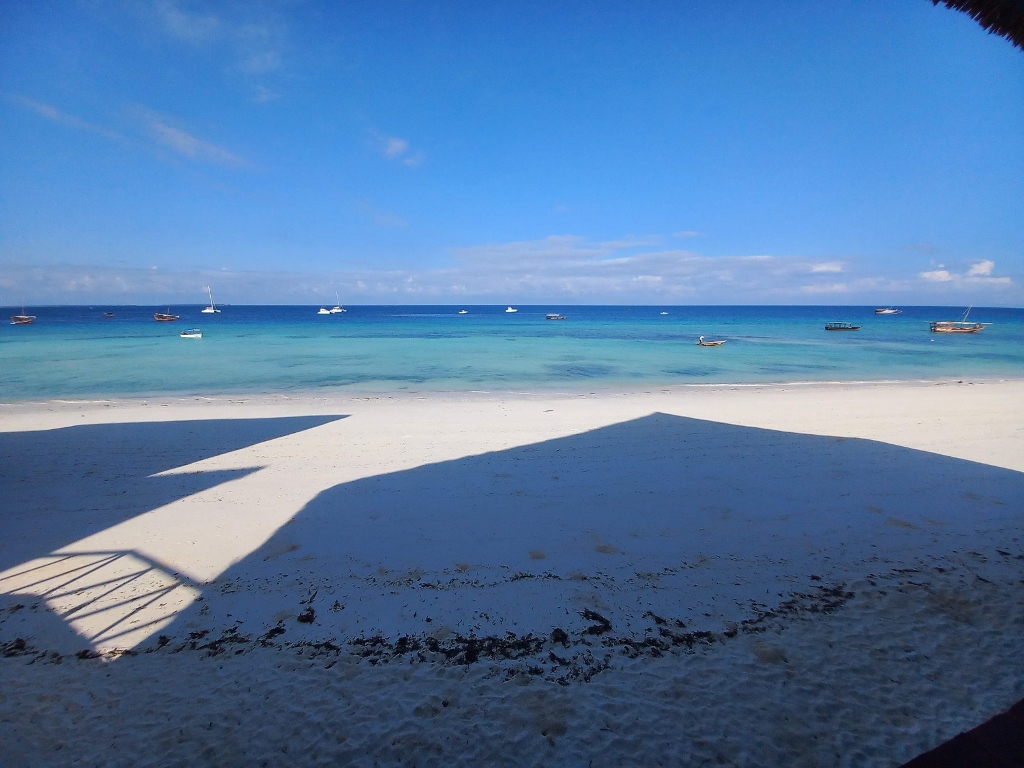 Beach in Nungwi
Beach in Nungwi
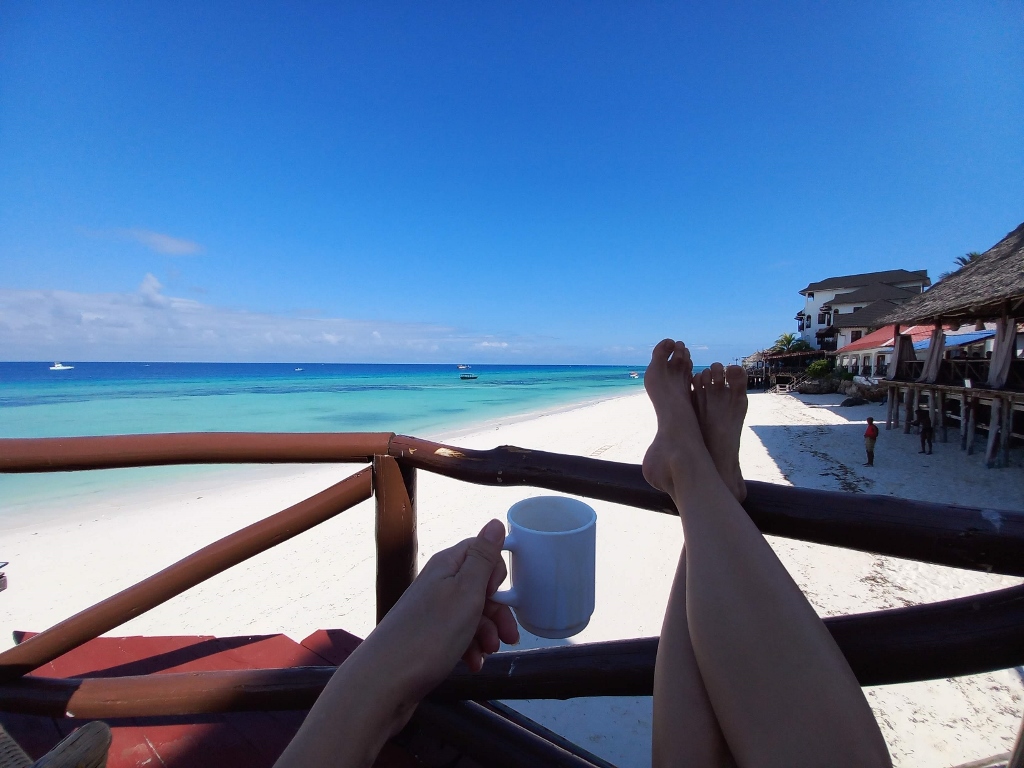 One of the coffees at the beach in Nungwi
One of the coffees at the beach in Nungwi
Later, however, I went to the beach with Lela, the wonderful woman with whom I shared a room, where we found a place in the thick shade, under some wooden terrace that belonged to a hotel or restaurant on the coast.
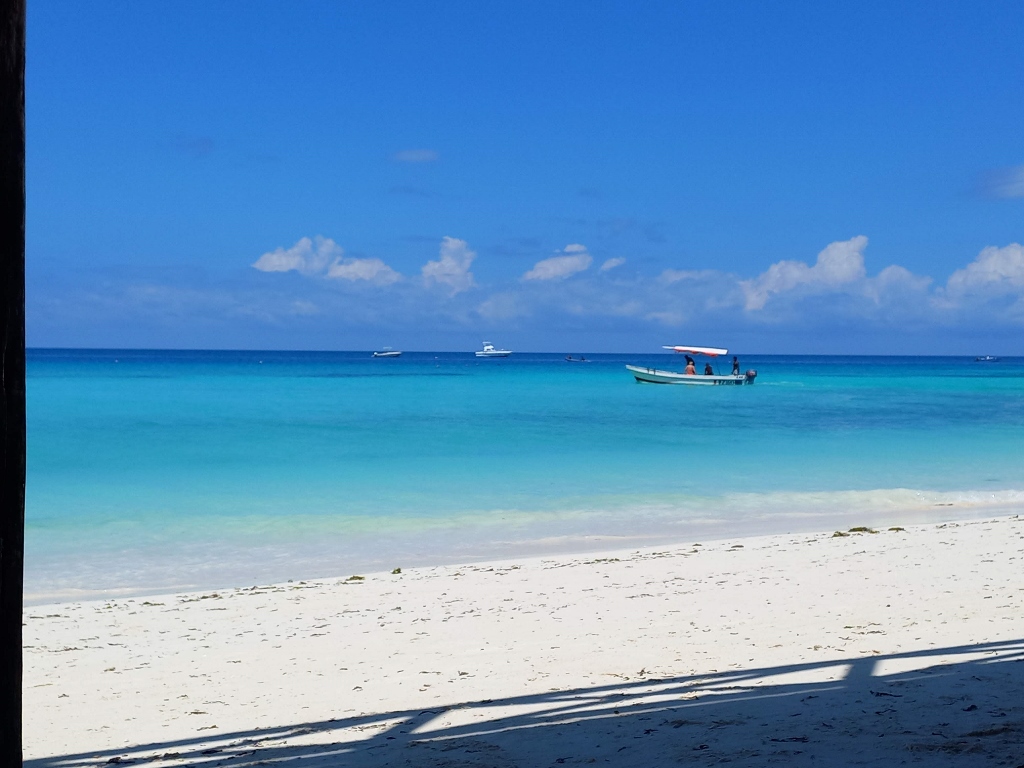 Beach in Nungwi
Beach in Nungwi
I would occasionally leave the safety of the deep shade because I was completely in awe of the beautiful colours and needed to take photos of the beach.
 Beach in Nungwi
Beach in Nungwi
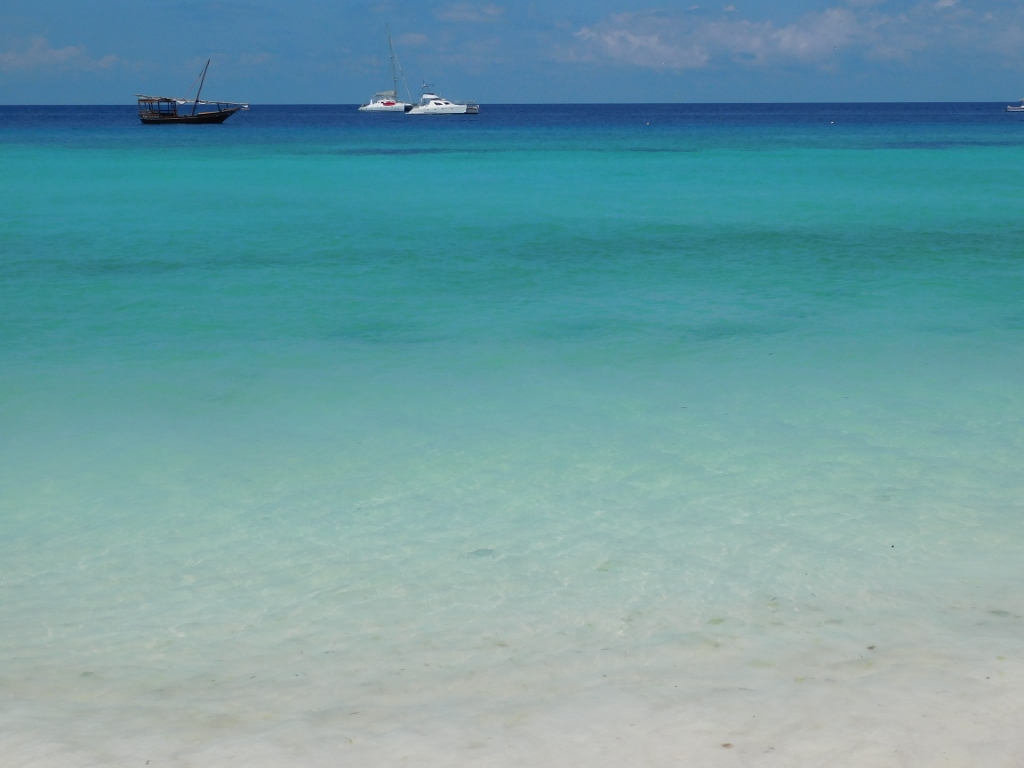 Beach in Nungwi
Beach in Nungwi
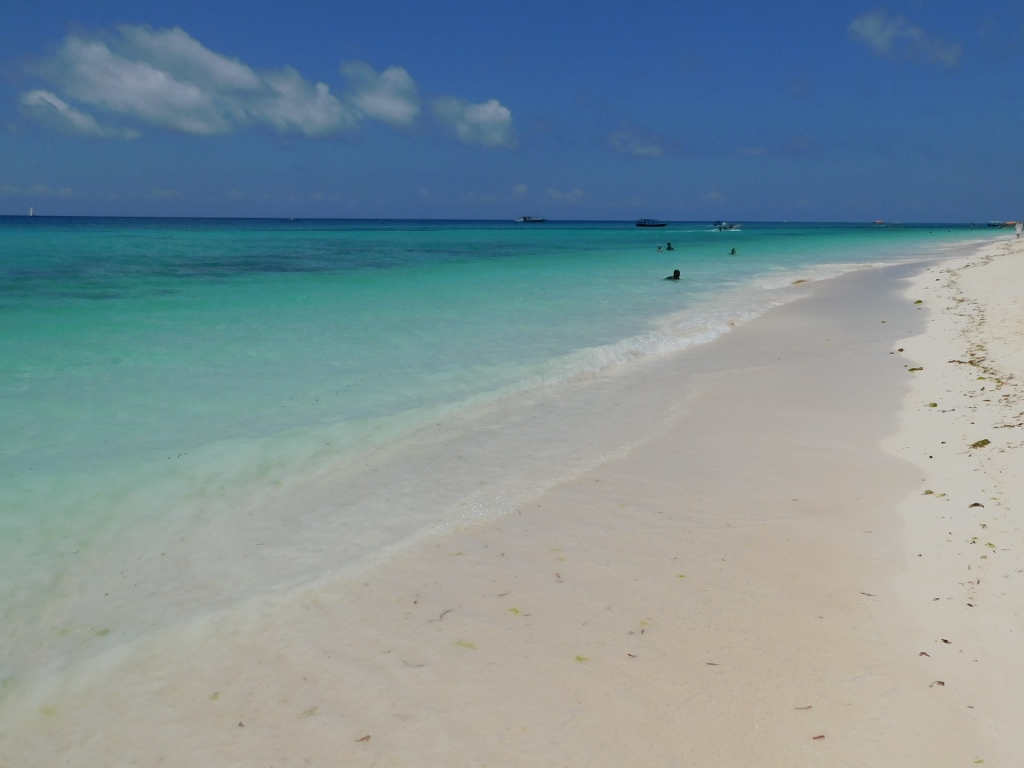 Beach in Nungwi
Beach in Nungwi
Obviously, I really enjoyed not only the wonderful colours, but also the swimming. The water was wonderful and the tide was starting to come in. This is very typical in Zanzibar. There are tides everywhere, but here the difference between them here is quite large and noticeable. Between my two swims, the water became deeper by half a meter for sure and it continued to rise even when Lela and I retreated to the room for a short rest. Our plan was to go for a walk in the village of Nungwi to get to know it a little better.
When we started with that walk, I first took photos of the beach from the terrace of our hotel where breakfast is served. It was now early afternoon and the sun was shining with all of its might.
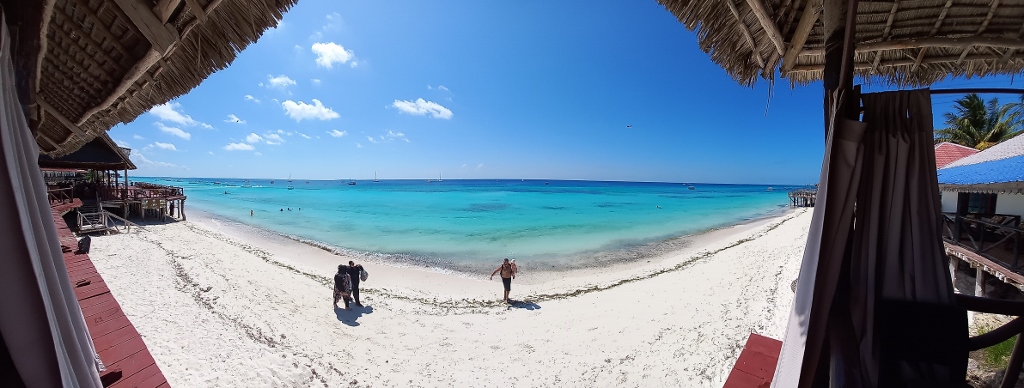 Beach in Nungwi
Beach in Nungwi
Nungwi is a larger village on the very northern tip of Unguja Island, which, as I’ve mentioned earlier, is often called Zanzibar. Zanzibar is in fact the name for the entire archipelago and semi-autonomous province belonging to Tanzania. As a reminder, here is a map showing the places I visited during this trip:
In the past, the village was known for making traditional sailing vessels, called “dhow.” However, today, with the development of tourism, Nungwi has become known primarily for its wonderful beach, especially the part on the western side. To clarify – as Nungwi occupies the very northern tip of the island, the settlement and countless hotels spread along both the eastern and western sides of the island.
Lela and I were now walking down an alley that led us to some sort of a square within the village. All these terms – alley and square – should be understood in relative terms. Namely, there is an asphalt road that leads from the south of the island to the centre of the settlement and then dirt streets start from there. Some of them are indescribably bumpy and I can say that with full certainty about the street that took us from the asphalt road to the hotel. I often thought that I would have covered that distance faster by going on foot, as the minibus had to drive extremely slowly, but I didn’t really mind it, because after all, it is a part of Zanzibar. If a person wants beautiful and well-maintained roads, they should go to Germany or Switzerland.
The streets that Lela and I went along on this occasion were perfectly fine and it was also nice that there was shade because the sun was extremely strong.
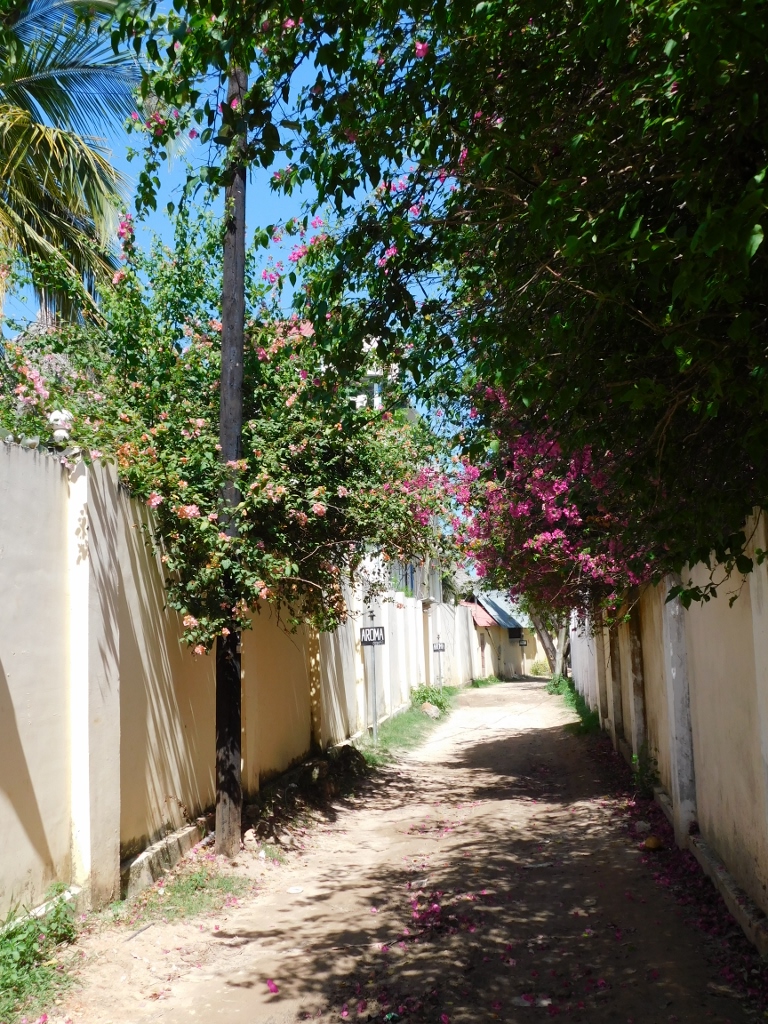 Nungwi, a detail
Nungwi, a detail
After this quiet section that can be seen in the previous photo, we came to an area where there were shops for tourists. I haven’t bought any souvenirs for a long time and when I go on a trip I take with me everything I need for the beach. On the other hand, I’m sorry that I don’t create any turnover for those people who work there, but what can I do, except take photos?
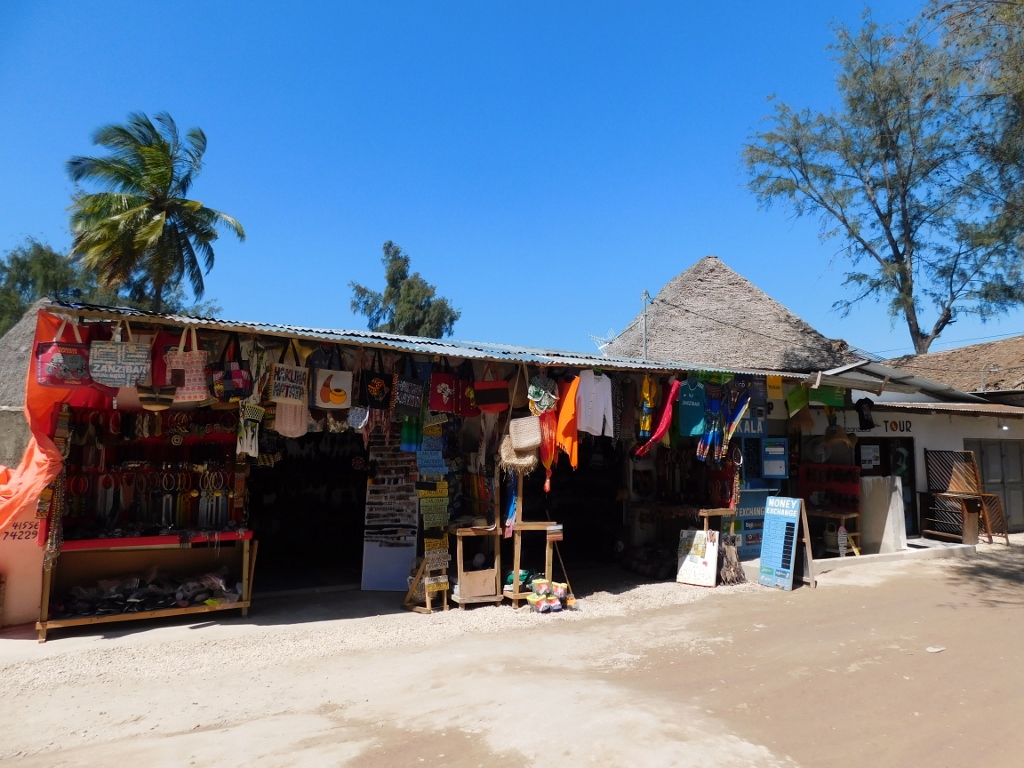 Nungwi, a detail
Nungwi, a detail
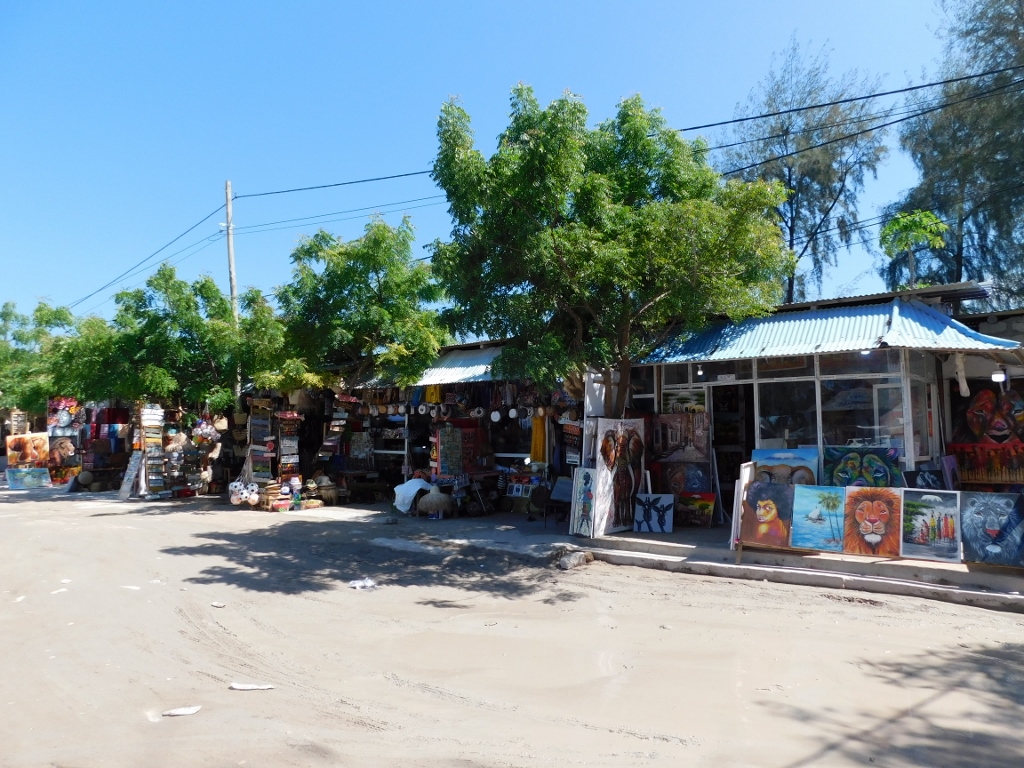 Nungwi, a detail
Nungwi, a detail
Having arrived at that square, it was clear that the difference between Zanzibar and some developed countries is not only in the quality of street and road maintenance. The scene from the next picture caught my eye, but I still thought that if it didn’t bother the people who lived here permanently, who am I to say anything?
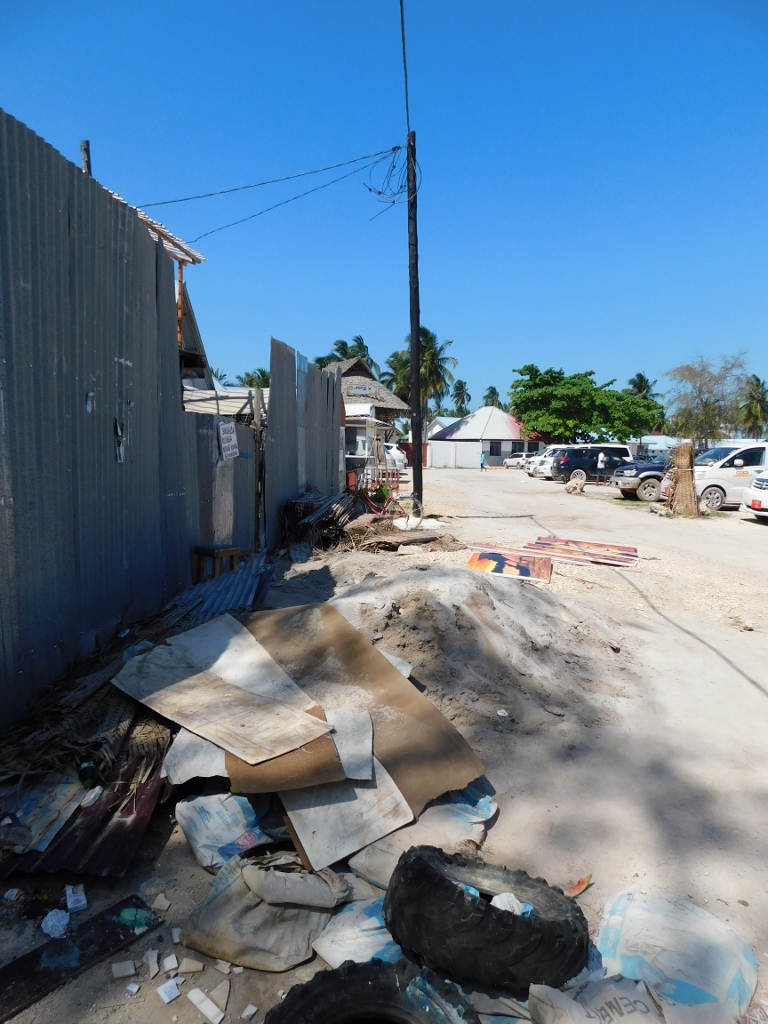 Nungwi, a detail
Nungwi, a detail
In the square that can be seen in the next picture, there are a couple of small supermarkets and a pharmacy, while money can be changed in various places. However, the most important thing for us was an inconspicuous restaurant that, among other things, offered excellent freshly squeezed juices and smoothies – almost an entire meal in one glass.
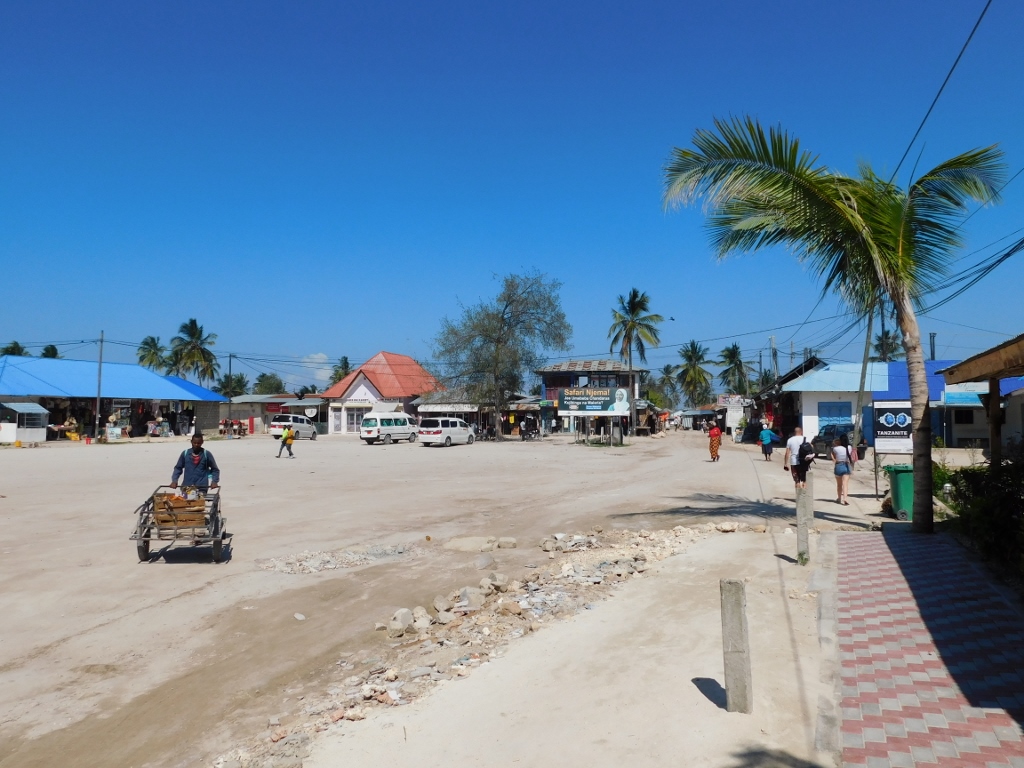 Nungwi, a detail
Nungwi, a detail
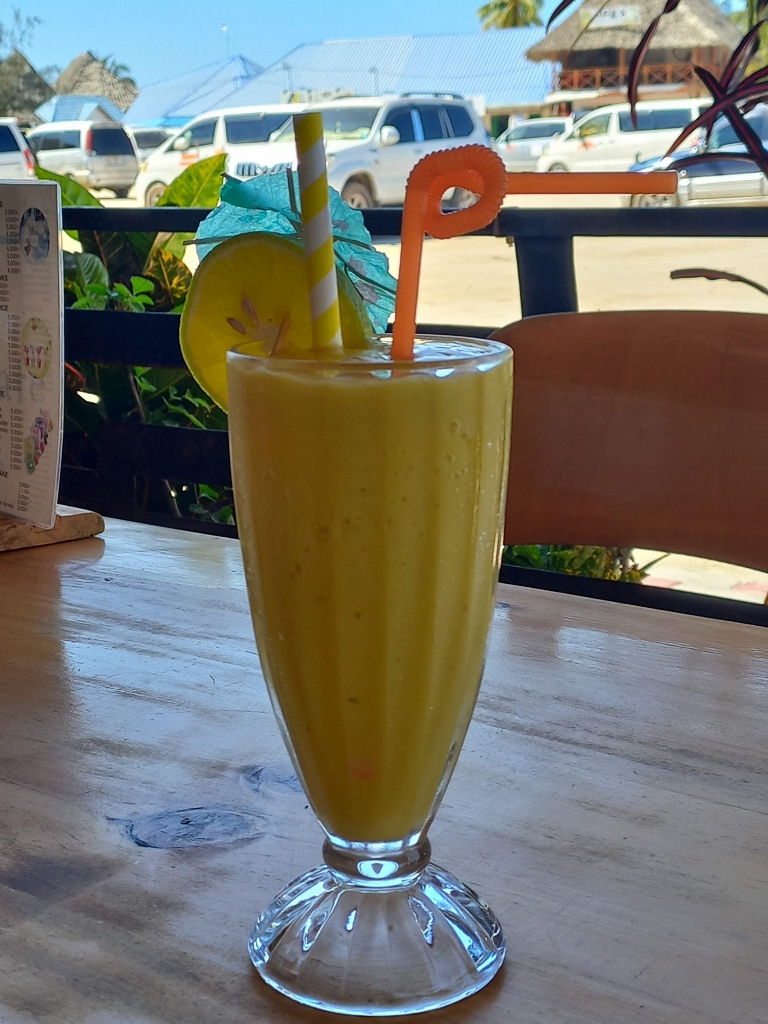 Smoothie in Nungwi
Smoothie in Nungwi
I spent the rest of the day exactly as one should on vacation – resting a little in the room and a little on the beach. It should be borne in mind that in December the sun in Zanzibar sets around 6:30 pm (during the year the difference in the sunset time is only about half an hour – the sun sets approximately from 6:15 pm to 6:45 pm). Lela and I came to the terrace of our hotel to watch the sunset and it was also an opportunity to watch an inevitable show performed by some local entertainers on the beach. It’s a very regular occurrence on all beaches throughout the day, but I have to admit that I wasn’t too interested. The loud music they brought with them actually bothered me from time to time, because I would have preferred to enjoy the sounds of nature.
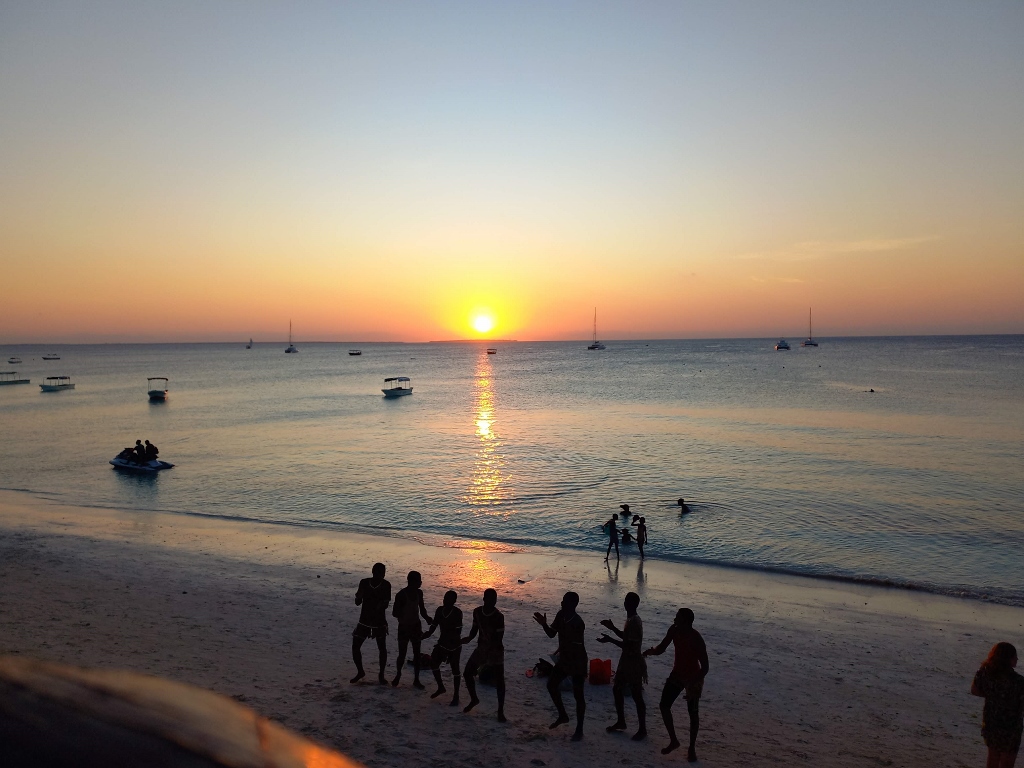 Sunset in Nungwi
Sunset in Nungwi
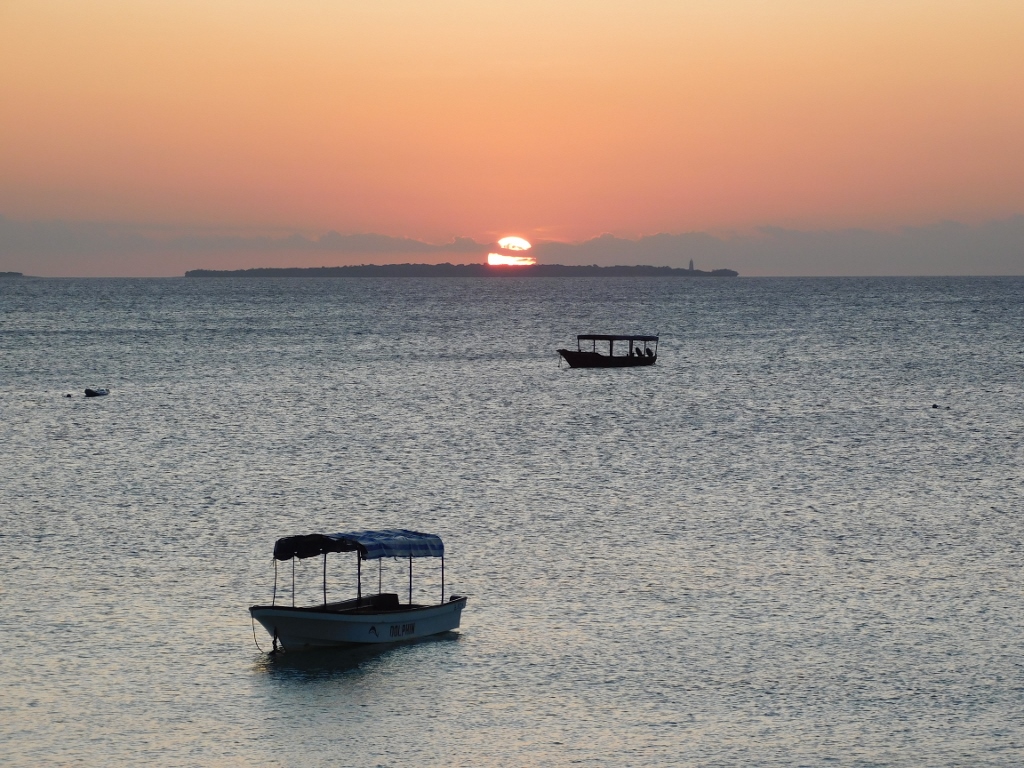 Sunset in Nungwi
Sunset in Nungwi
We also had dinner here, because I had to go to bed early, so I didn’t even think about going anywhere else. I chose some tuna and it was not bad.
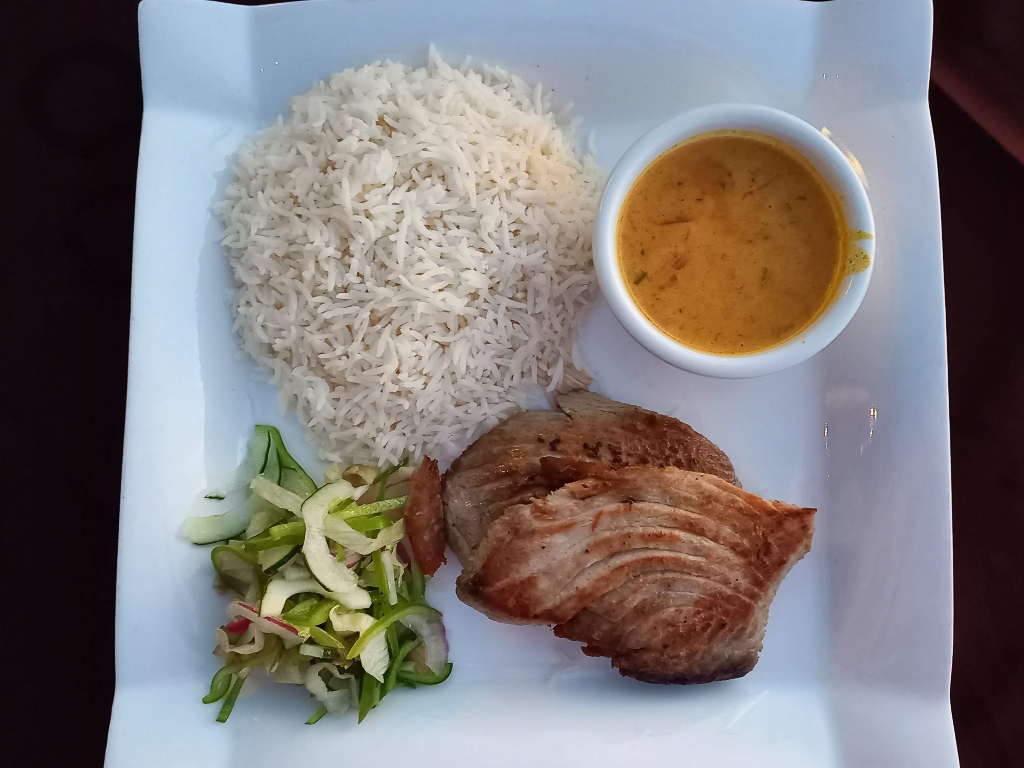 Dinner in Nungwi
Dinner in Nungwi
The reason I had to go to bed early was because I got up at 4:30 the next morning! Namely, I went on another trip and this one was very special. I left the hotel by a mini-bus a little after 5 in the morning and on this occasion there were only 5-6 of us from the group who went on this excursion. First, we drove for about an hour to get to the airport near Zanzibar City.
This day I went to the Mikumi National Park, which is the fourth largest national park in Tanzania. I was really looking forward to this trip and already in Belgrade I decided that I definitely wanted to go. The original version of the trip was to go by boat to Dar es Salaam, the largest city in Tanzania, and from there take a coach covering about 300 km to the national park. Afterwards, the return trip would cover the same route. This version of the trip was supposed to last for three days and we would sleep on the mainland, but we were actually offered to go by plane and the trip would take only one day, while the price was the same. This was no brainer and I had immediately signed up for the trip.
In this version of the trip, the visitors fly by small planes and after about an hour you land directly in the national park. We arrived here around 8 in the morning.
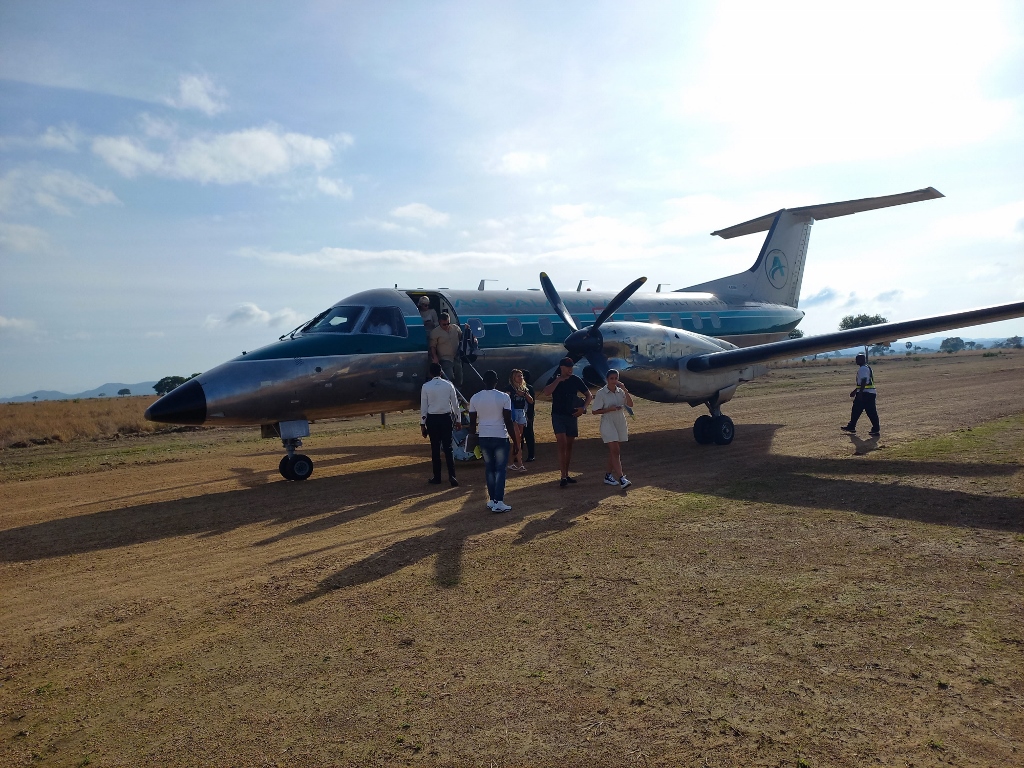 The plane has just landed at the airport in the Mikumi National Park
The plane has just landed at the airport in the Mikumi National Park
To start with, I found it delightful that the landing strip was made of – dirt. There was no asphalt in sight.
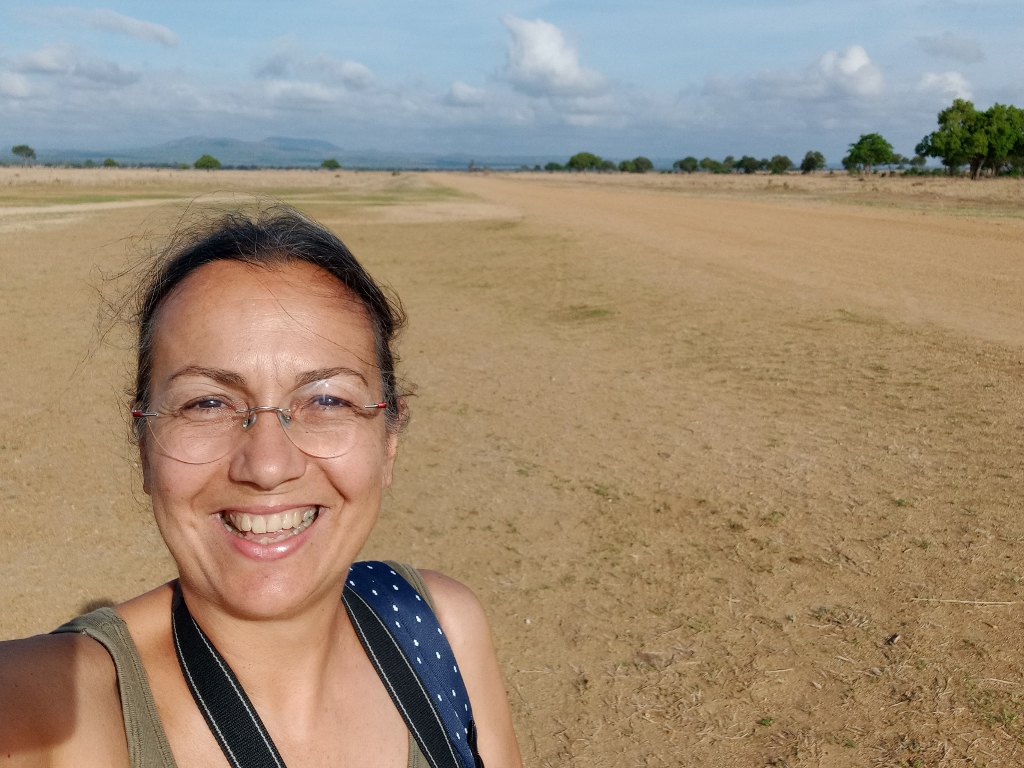 Delighted me at the airport in the Mikumi National Park
Delighted me at the airport in the Mikumi National Park
The “airport building” was in line with the whole airport.
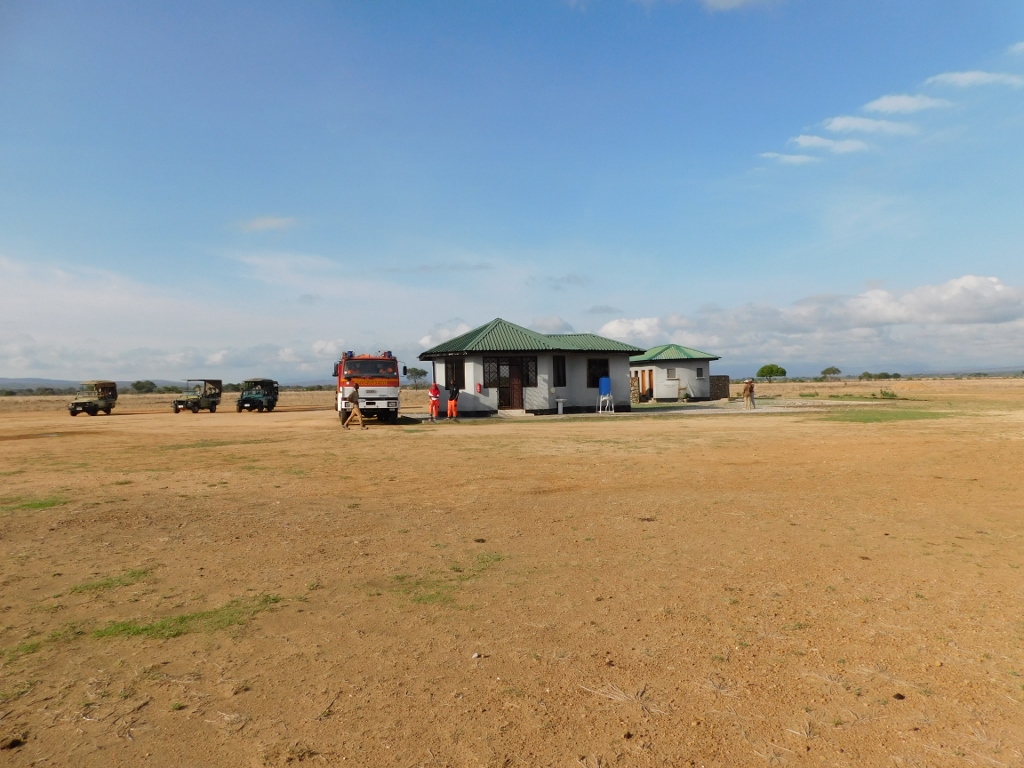 Airport building in the Mikumi National Park
Airport building in the Mikumi National Park
We were met here by a young man who would be our driver and the guide on this day, while we were to do the tour by a 4-wheel drive vehicle that was built in such a way as to allow a beautiful view in all directions. I took a seat right behind the driver and was very satisfied. As it turned out, it made the communication easier and it became clear to him very quickly that out of the whole group I was the one who was most interested in different animals, so he often stopped and waited while I took photos and only then would he move on.
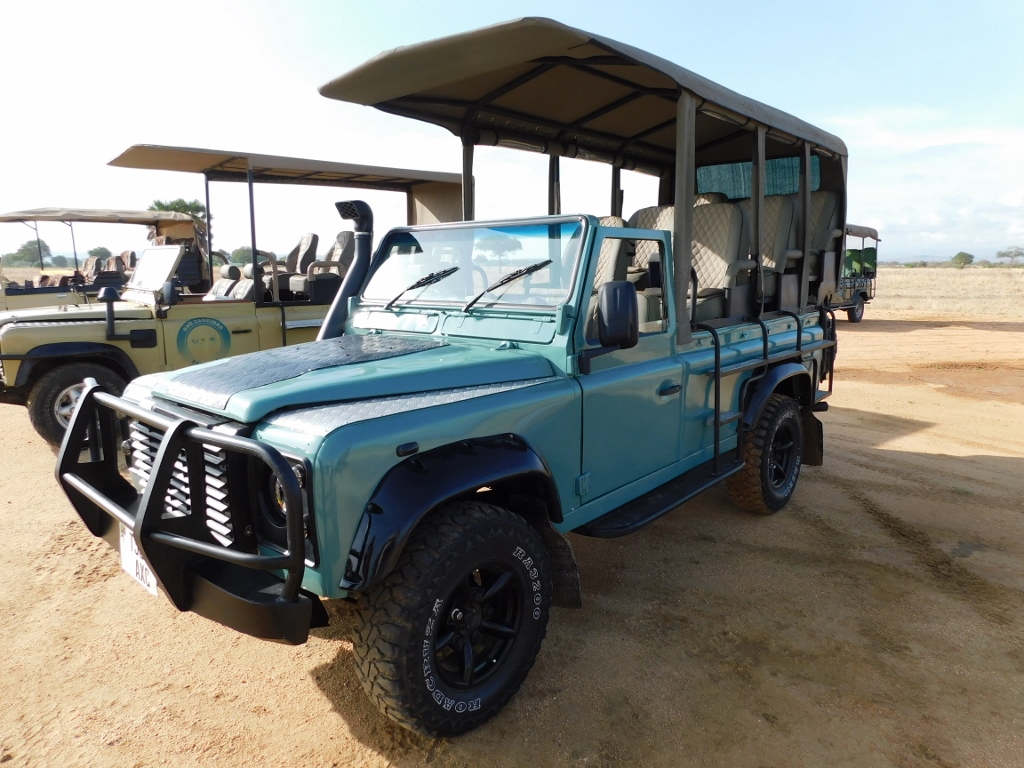 Transportation within the Mikumi NP
Transportation within the Mikumi NP
When coming on a safari, it is important that visitors wear clothes of neutral colours. We were told that before leaving for the trip. What this local guide told us on the spot was that we should not make any noise, or jump around the car, or make sudden movements and wave. Therefore, the standard is peaceful observation of the animals and nature.
I have to say that there was one person in my group who stood out from all of the above. To begin with, she and one other person were dressed in brightly coloured clothes. I guess the two of them simply didn’t have neutral coloured clothes or they didn’t know what the instructions meant. But that didn’t bother me. However, when we were leaving the airport, she asked the driver to – put some music on!!! I reacted at once and said that we came for a safari which meant that we were to look at and listen to the nature. Admittedly, the driver had no intention of listening to her either.
I couldn’t stop wondering why some people go on various tours that fundamentally do not interest them in the least, nor do they know anything about it, nor do they want to learn anything. I understand that they have money and want to tell others where they have been, but... I guess there are better ways to spend money and brag to friends.
In any case, very soon after leaving the airport, maybe after some 5 minutes, we saw the first animals. They were impalas.
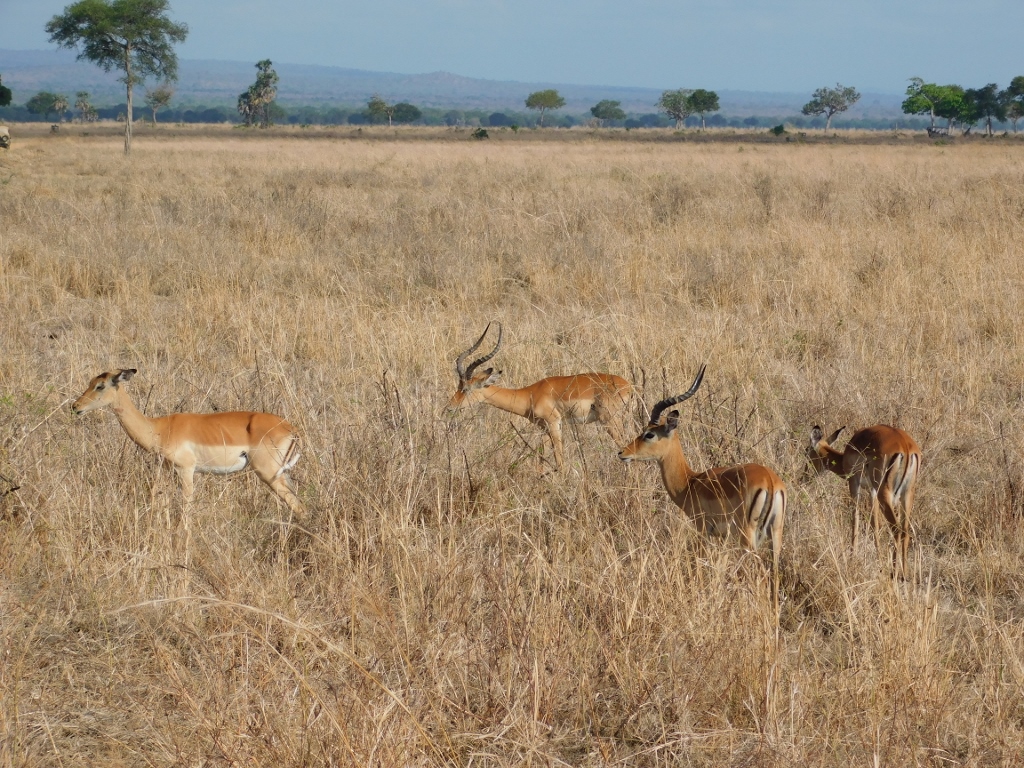 Impalas in the Mikumi National Park
Impalas in the Mikumi National Park
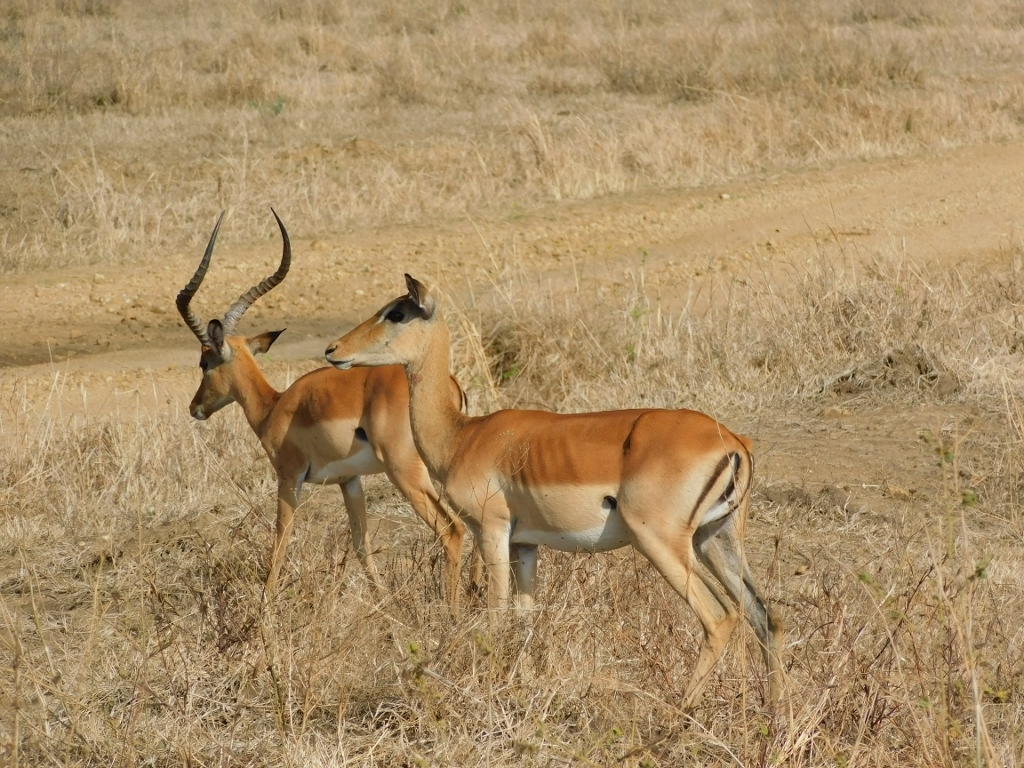 Impalas in the Mikumi National Park
Impalas in the Mikumi National Park
Soon we could also spot our first giraffe in the distance.
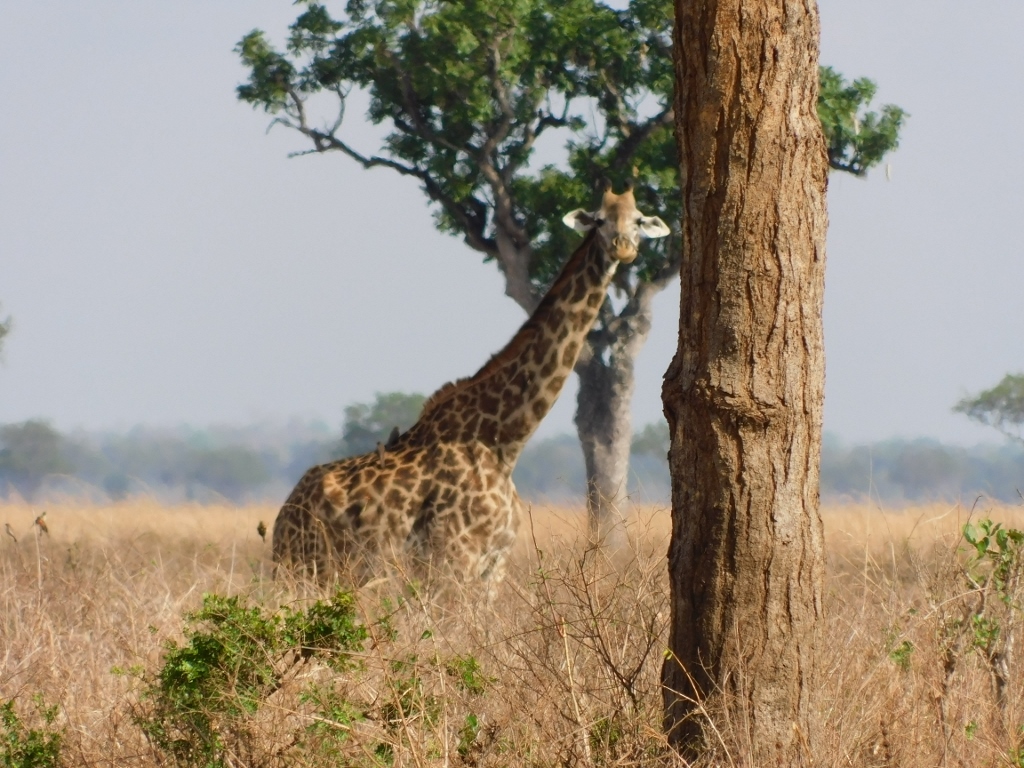 Giraffe in the Mikumi National Park
Giraffe in the Mikumi National Park
From time to time our vehicle stopped in order to allow us to get a better view at something and so I happened to see two long-tailed fiscal magpies (Lanius cabanisi) in a treetop on my side of the road.
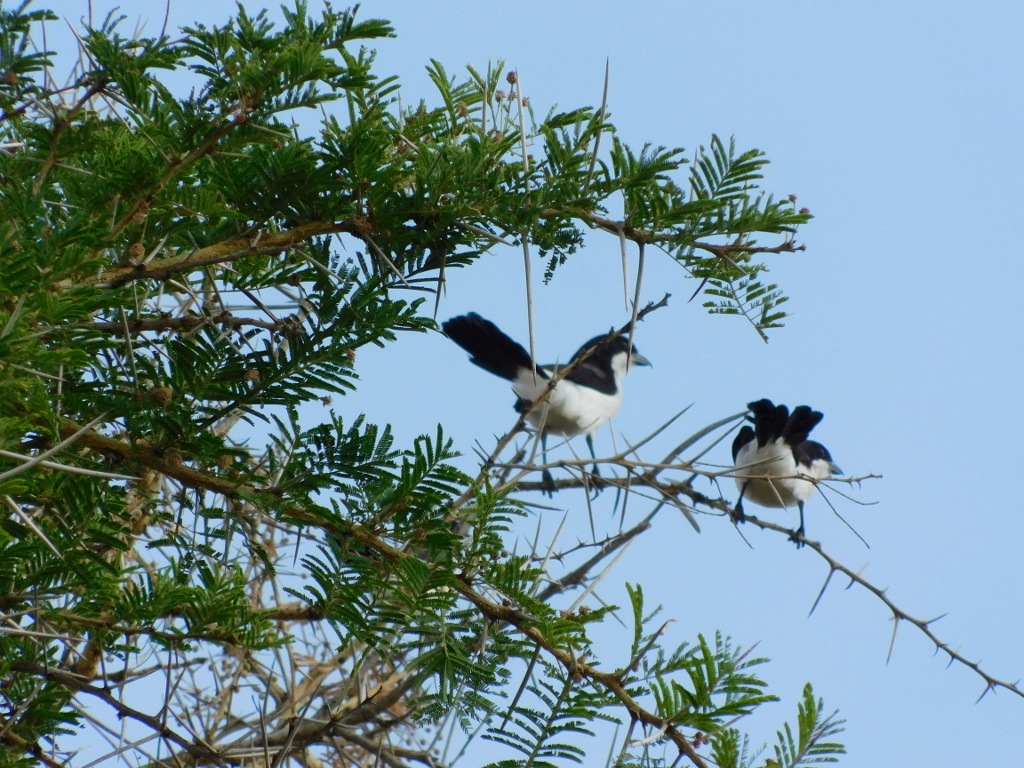 Long-tailed fiscals
Long-tailed fiscals
But what started to delight me in particular and will last the whole day was the view all around me. I had the impression as if I had entered my television while some natural history programme was on, because that was the only place where I had seen the savannah before. Even as a child, together with my brother, I loved watching documentary programmes that showed different habitats and the animals that inhabit them. And to this very day, when I have time, I mostly like to watch nature channels on TV.
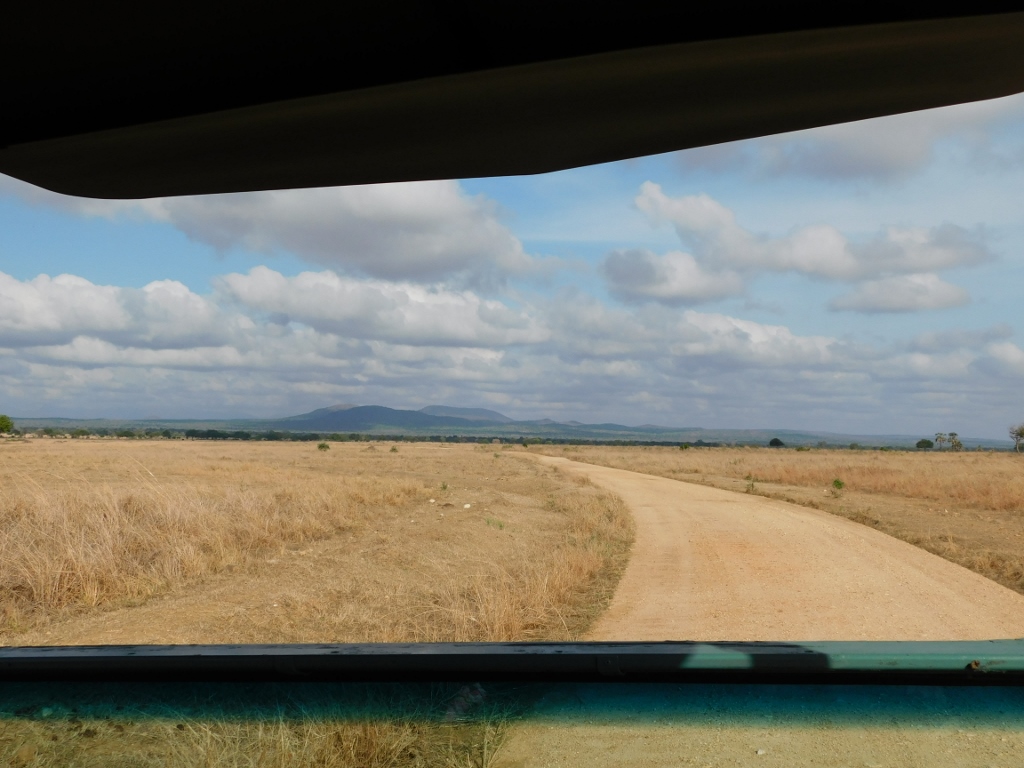 Mikumi National Park
Mikumi National Park
And then at one point we saw elephants in the distance. I was very lucky to have a camera that could bring them closer to me.
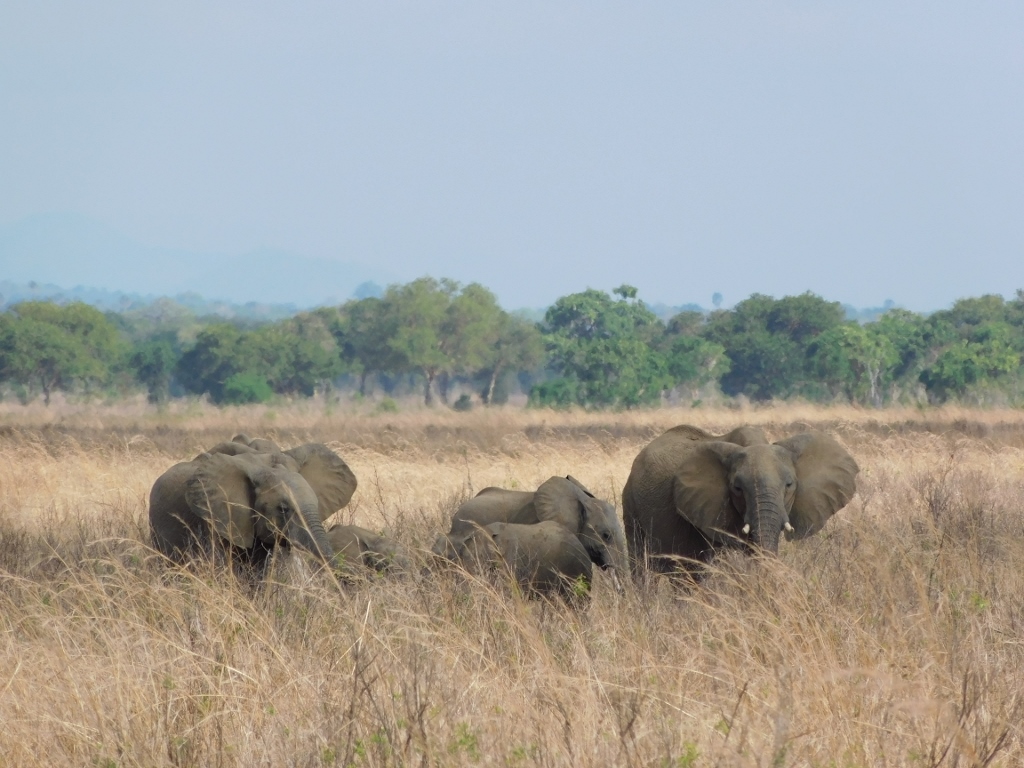 Elephants in the Mikumi National Park
Elephants in the Mikumi National Park
 Elephants in the Mikumi National Park
Elephants in the Mikumi National Park
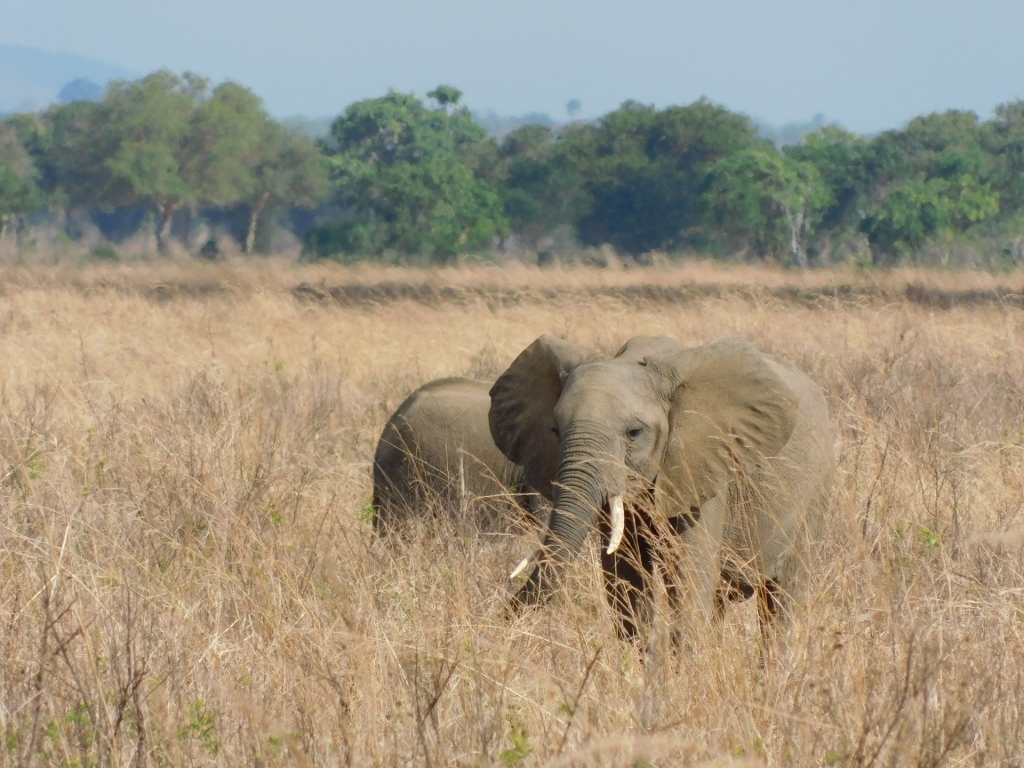 Elephants in the Mikumi National Park
Elephants in the Mikumi National Park
As it can be seen, there was a small herd of elephants here, while a little farther away, on the other side of the road, we also saw a lone elephant.
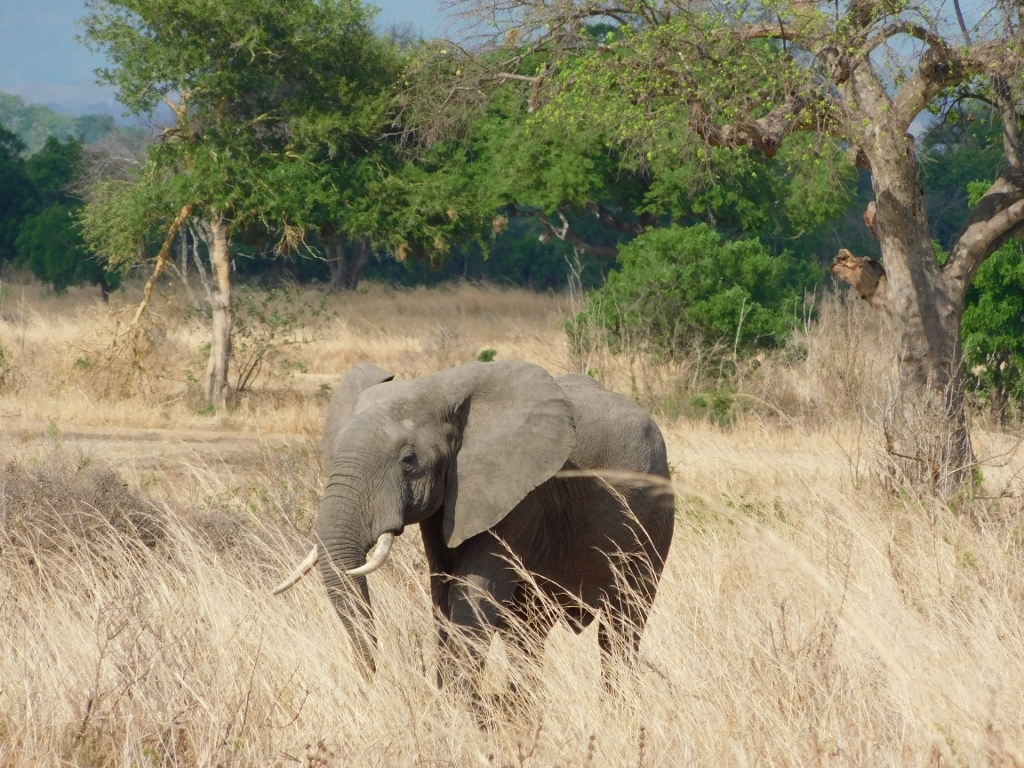 Elephant in the Mikumi National Park
Elephant in the Mikumi National Park
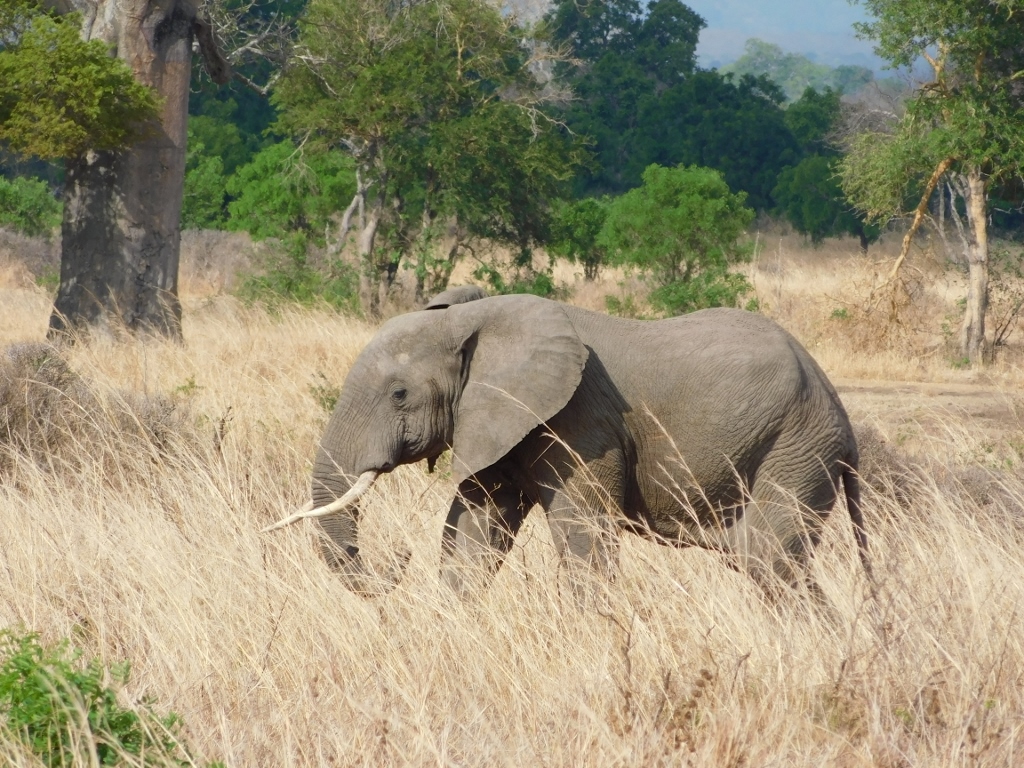 Elephant in the Mikumi National Park
Elephant in the Mikumi National Park
Needless to say, in addition to animals, here it is also possible to see different interesting plants, including trees.
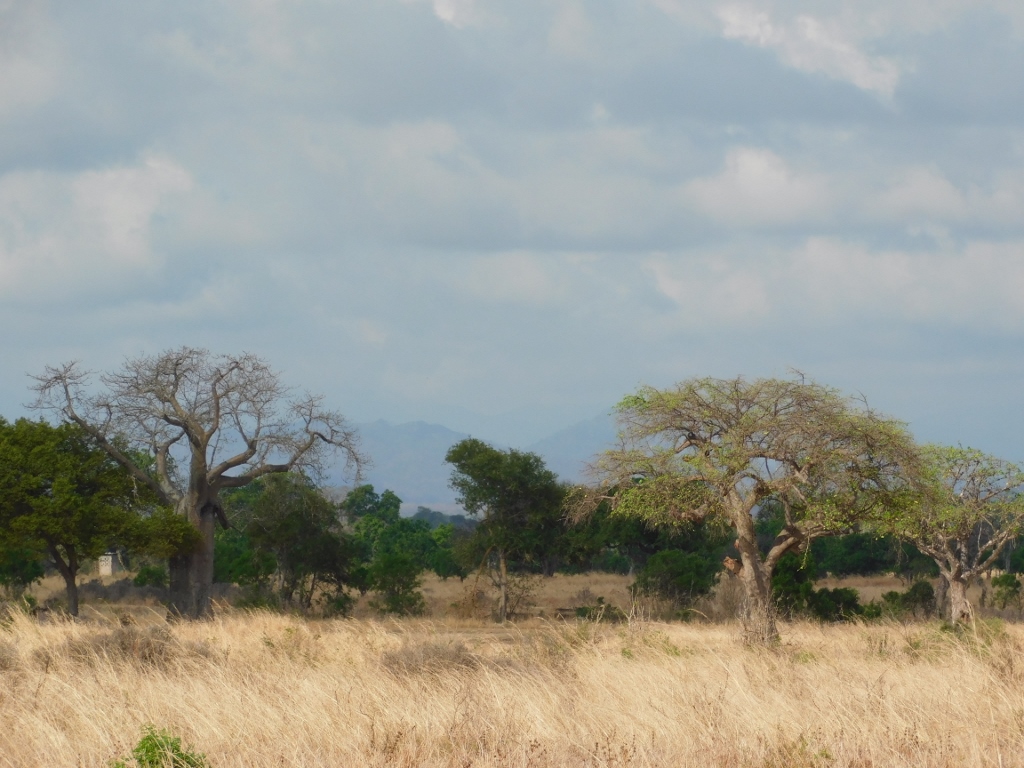 Trees and grasses in the Mikumi National Park
Trees and grasses in the Mikumi National Park
But, since I was fascinated by the animals, on this occasion I paid less attention to the world of flora, except in a few cases. To begin with, we passed a sausage tree (Kigelia africana). When you take a closer look at its fruits, it is quite clear where this name comes from.
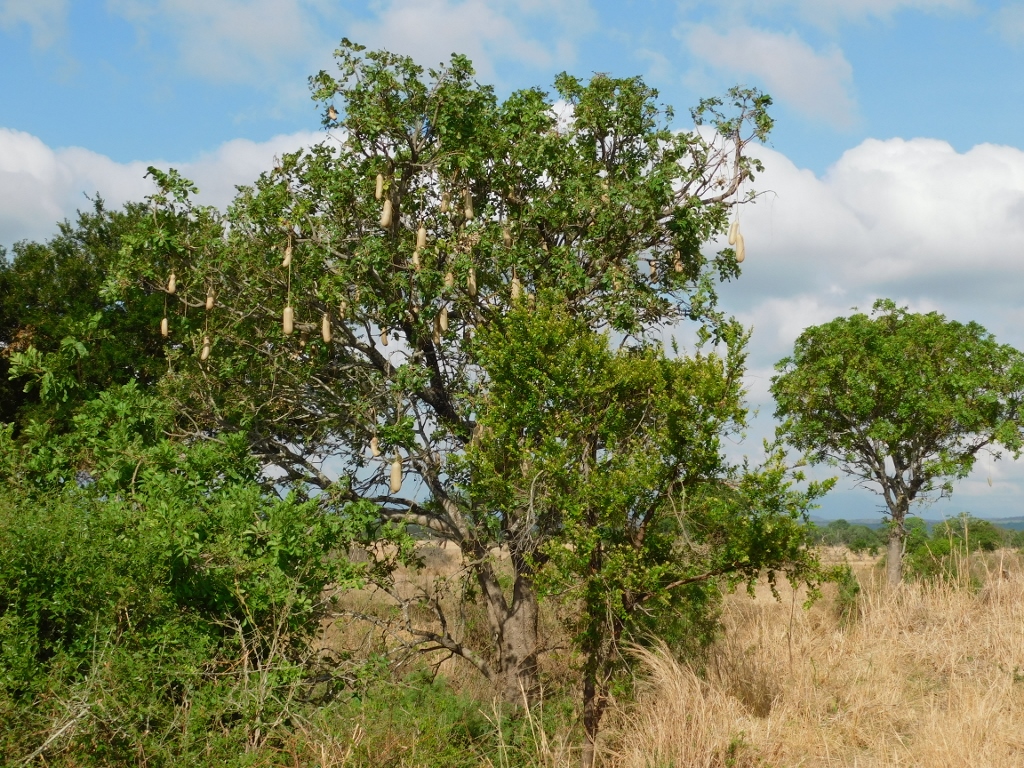 Sausage tree in the Mikumi National Park
Sausage tree in the Mikumi National Park
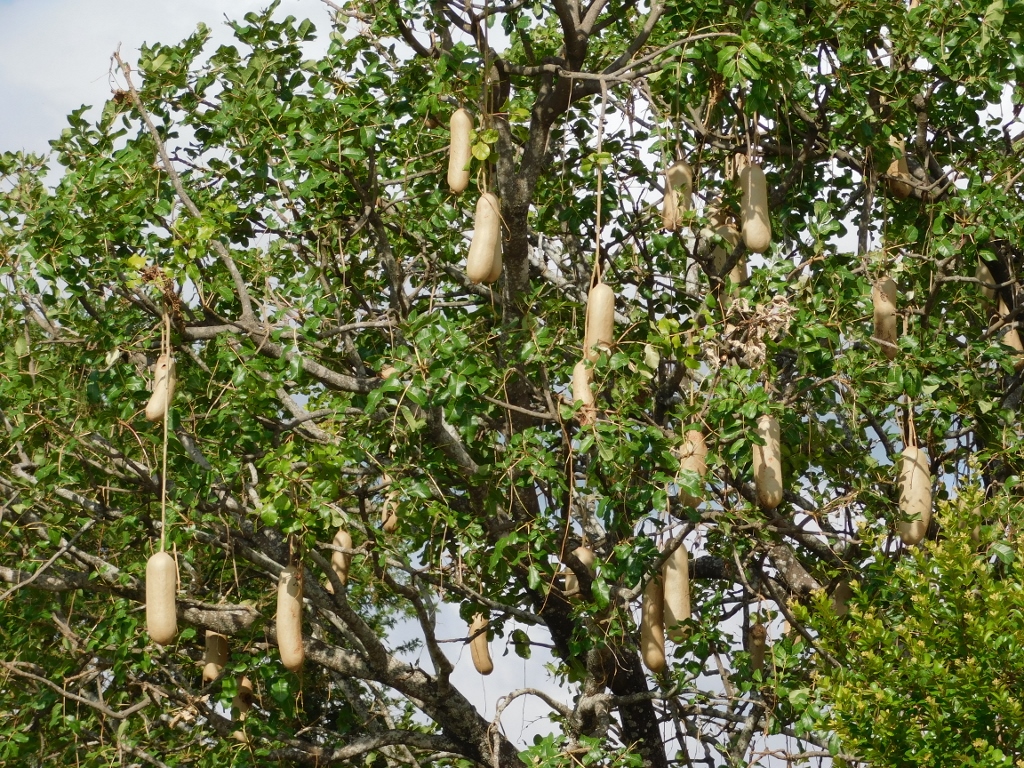 Sausage tree in the Mikumi National Park
Sausage tree in the Mikumi National Park
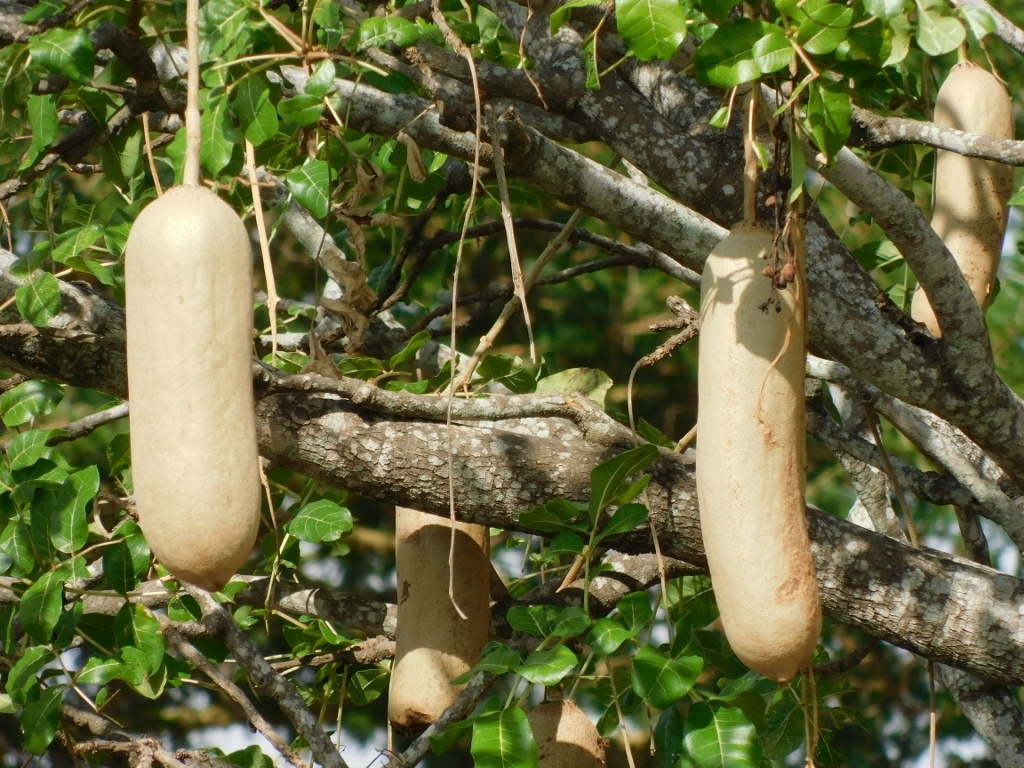 Sausage tree in the Mikumi National Park
Sausage tree in the Mikumi National Park
Then, almost in the middle of the road, we ran into a young cape bushbuck (Tragelaphus sylvaticus). The mother was nearby and we did not see her, but for a short time we looked at the calf and it looked at us, only to leave us at some point and go to join its mother.
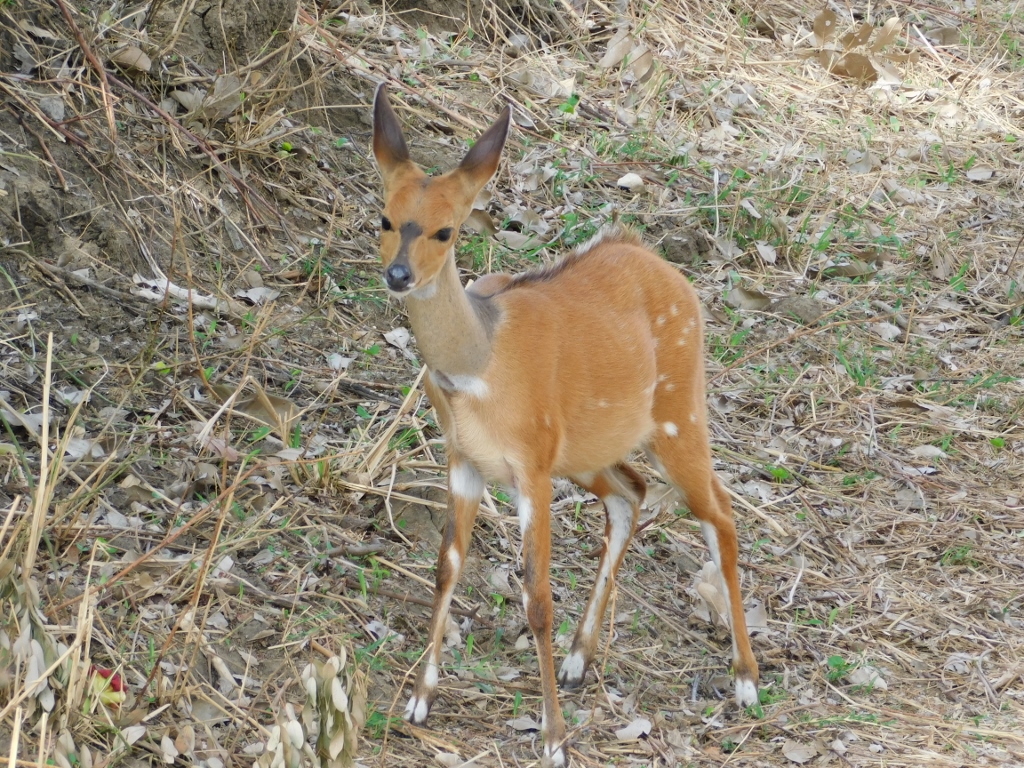 Cape bushbuck in the Mikumi National Park
Cape bushbuck in the Mikumi National Park
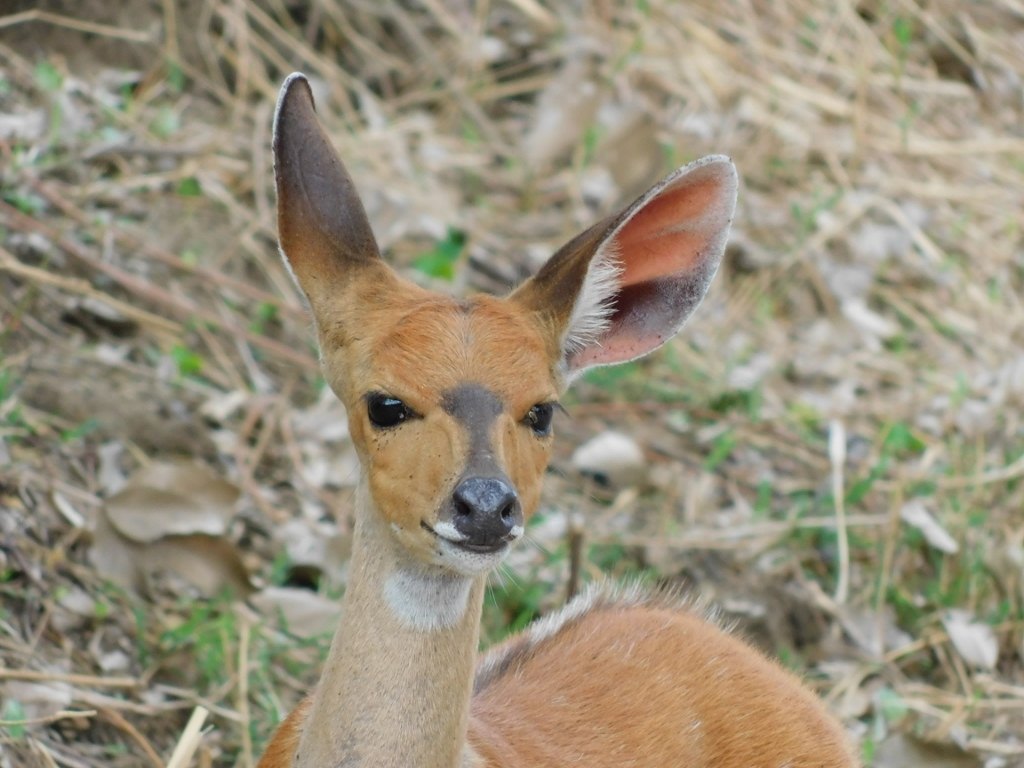 Cape bushbuck in the Mikumi National Park
Cape bushbuck in the Mikumi National Park
There were also some red-necked spurfowl (Pternistis afer) nearby.
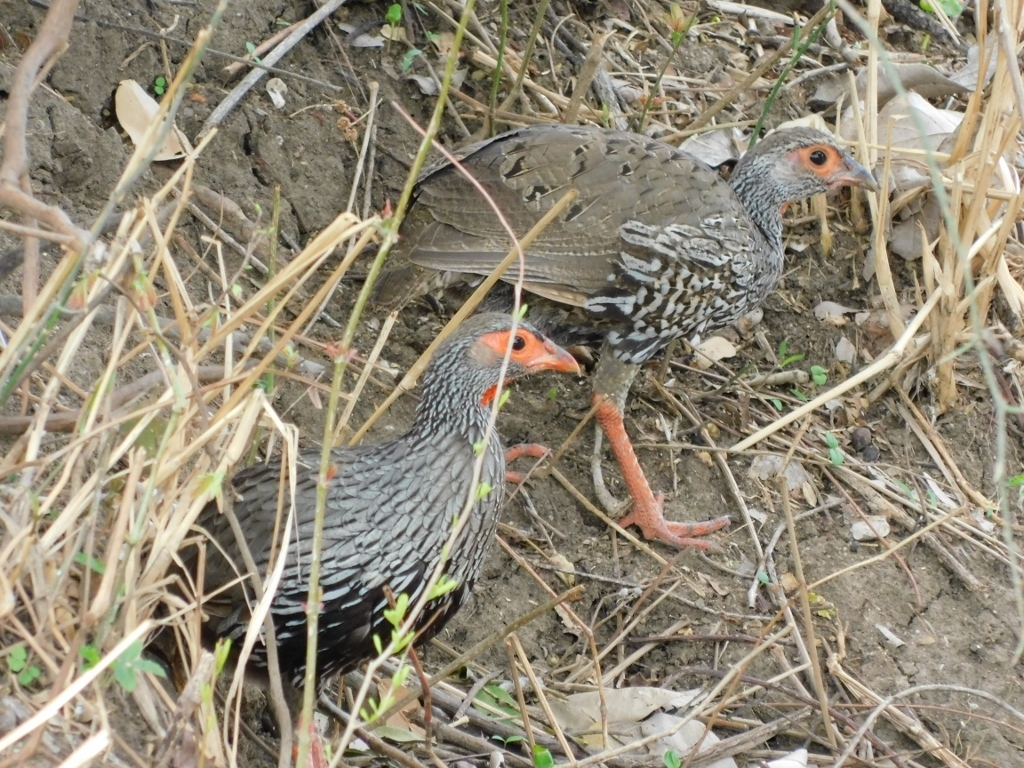 Red-necked spurfowl in the Mikumi National Park
Red-necked spurfowl in the Mikumi National Park
We soon passed by a pond that is used for animals to drink water, but we were told that we would return there later.
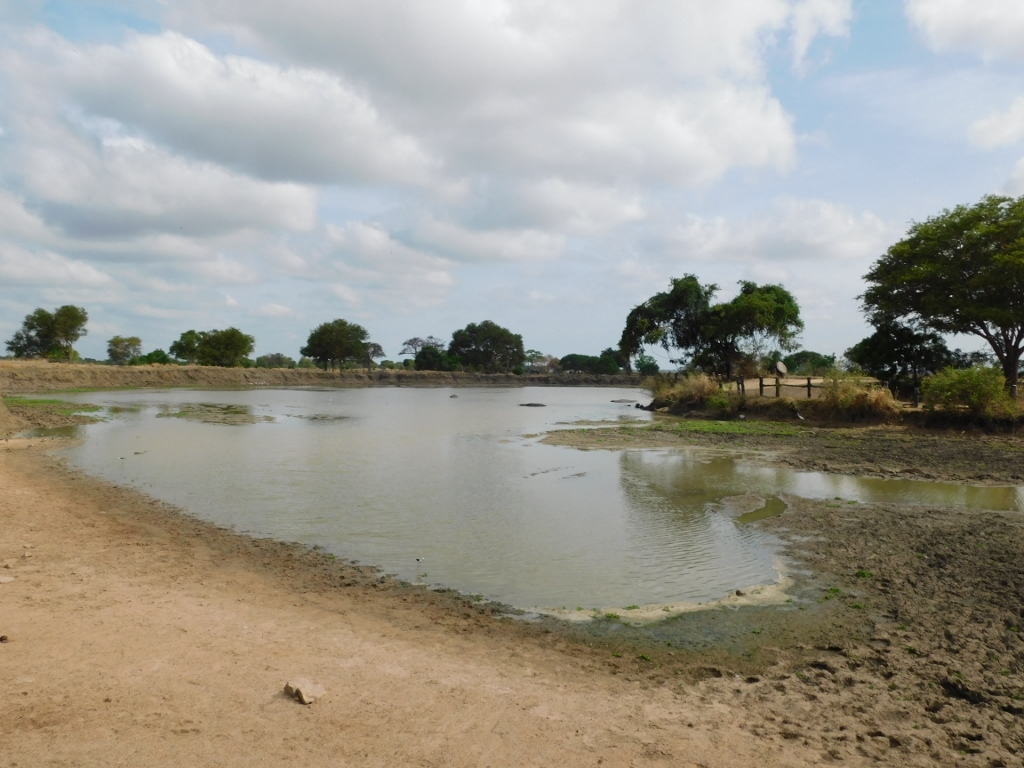 Pond in the Mikumi National Park
Pond in the Mikumi National Park
For the time being, we drove on and soon we spotted a couple of African buffalos.
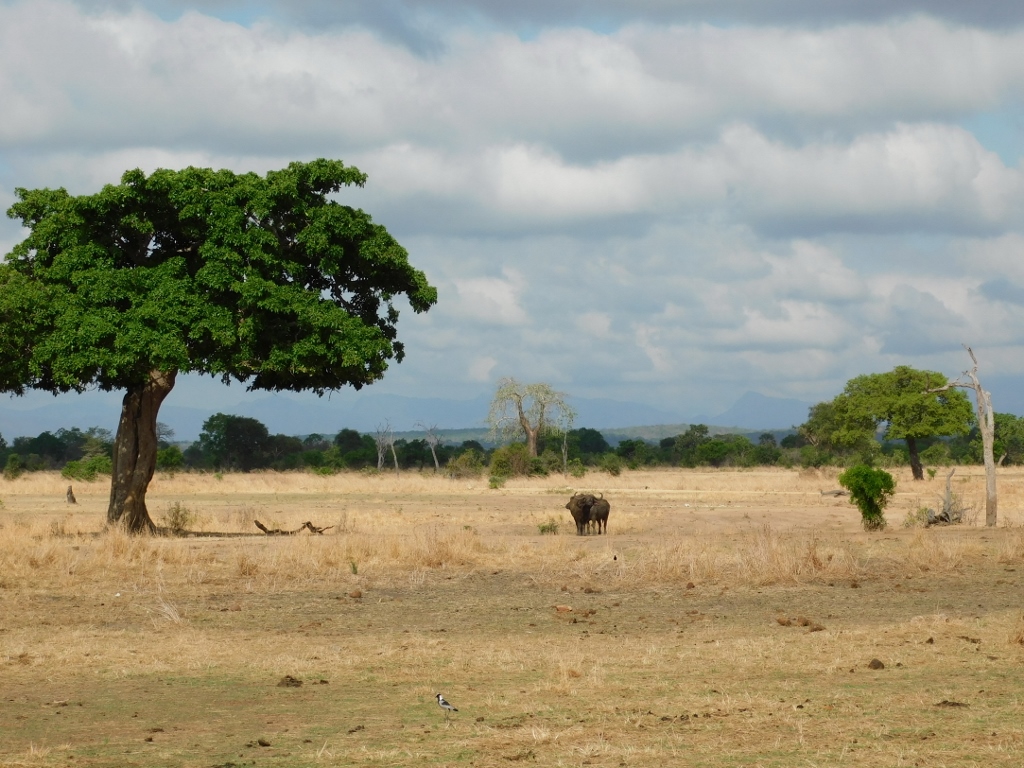 African buffalos in the Mikumi National Park
African buffalos in the Mikumi National Park
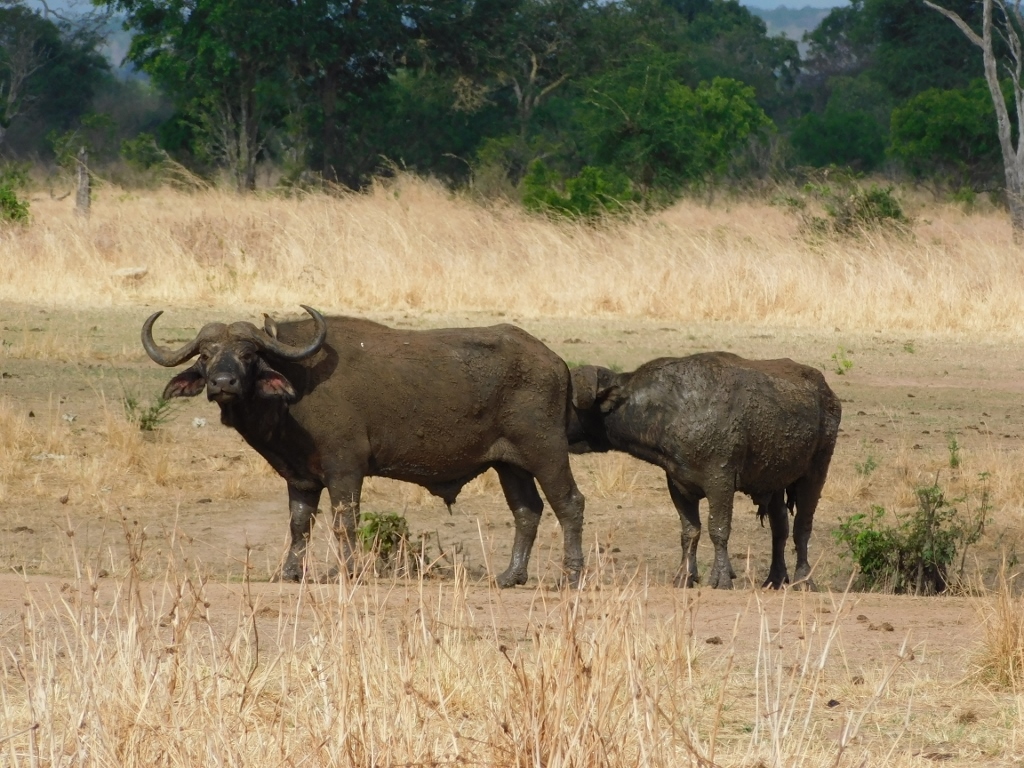 African buffalos in the Mikumi National Park
African buffalos in the Mikumi National Park
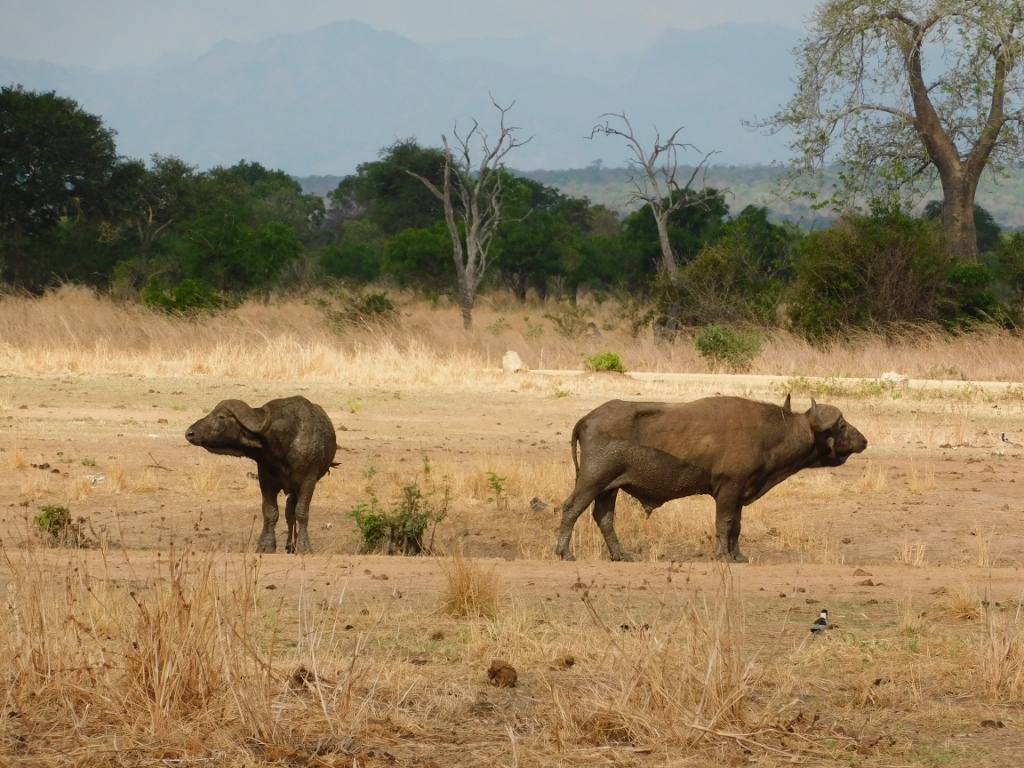 African buffalos in the Mikumi National Park
African buffalos in the Mikumi National Park
And then we started to come across various birds. Some were walking on the grass or on the road, while others were where one would expect them, in the trees.
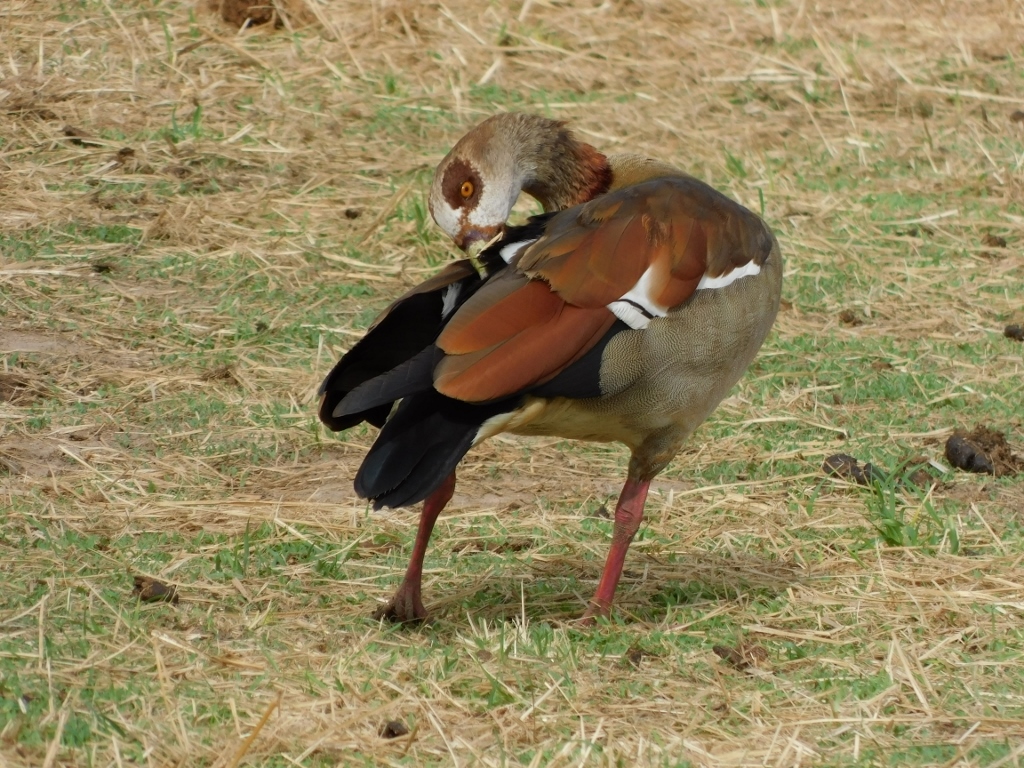 Egyptian goose (Alopochen aegyptiaca)
Egyptian goose (Alopochen aegyptiaca)
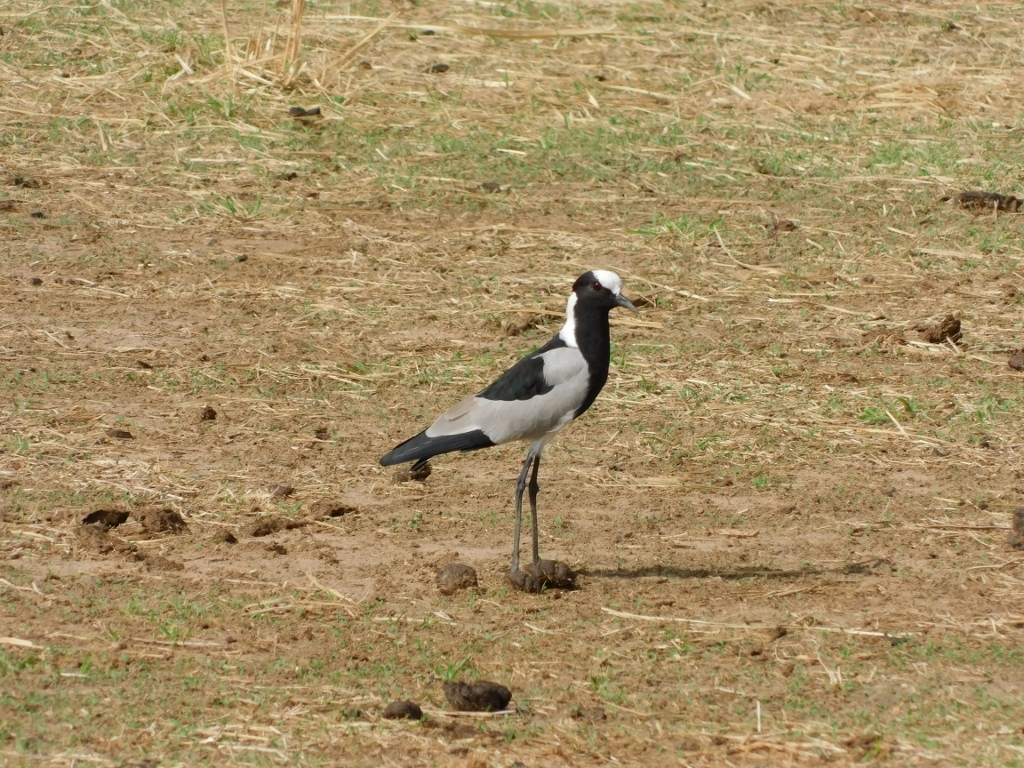 Blacksmith lapwing (Vanellus armatus)
Blacksmith lapwing (Vanellus armatus)
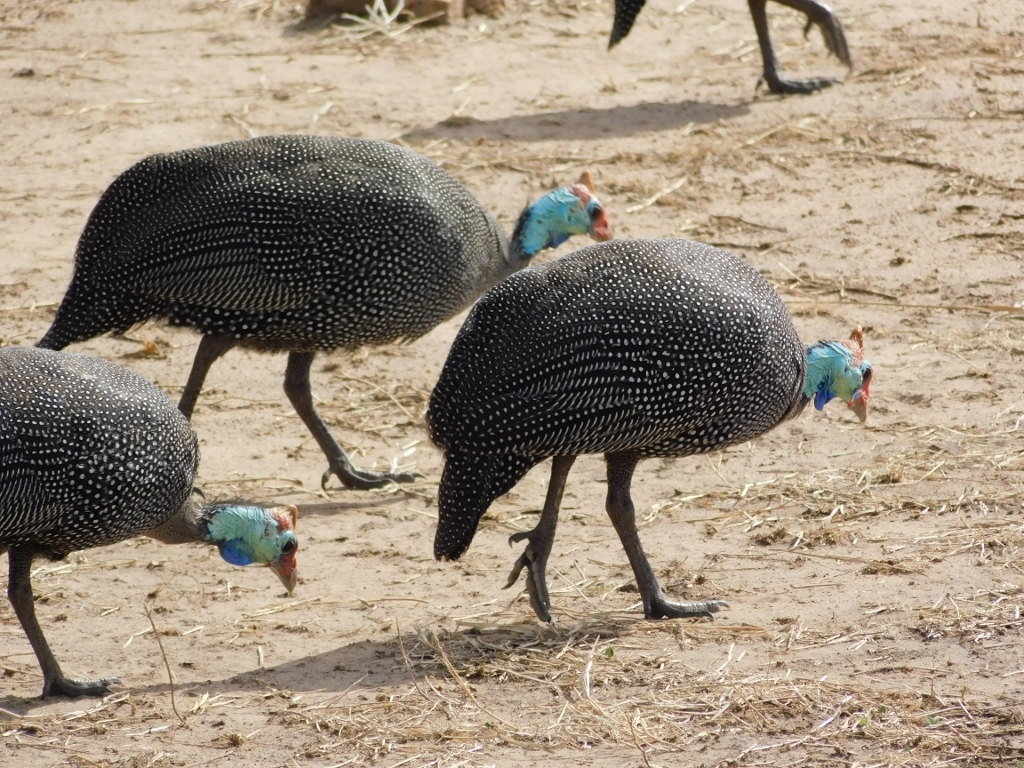 Helmeted guineafowl (Numida meleagris)
Helmeted guineafowl (Numida meleagris)
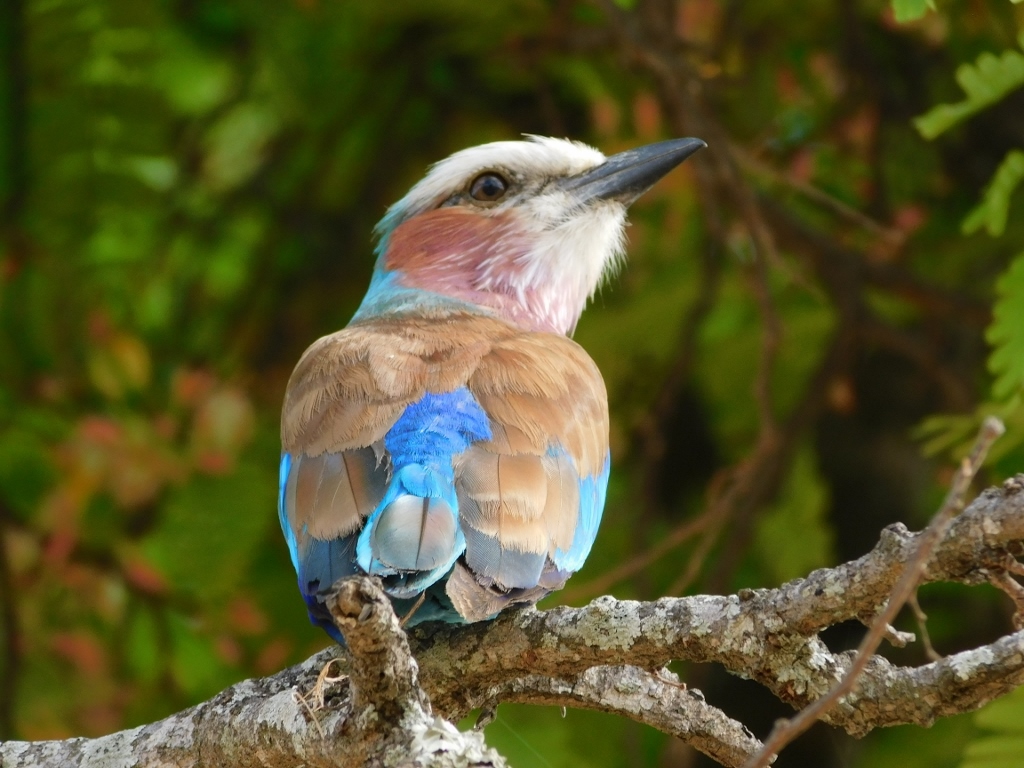 Lilac-breasted roller (Coracias caudatus)
Lilac-breasted roller (Coracias caudatus)
Of course, not everything here is so beautiful and colourful. Life consists of many things, including death, which is often violent in the savannah.
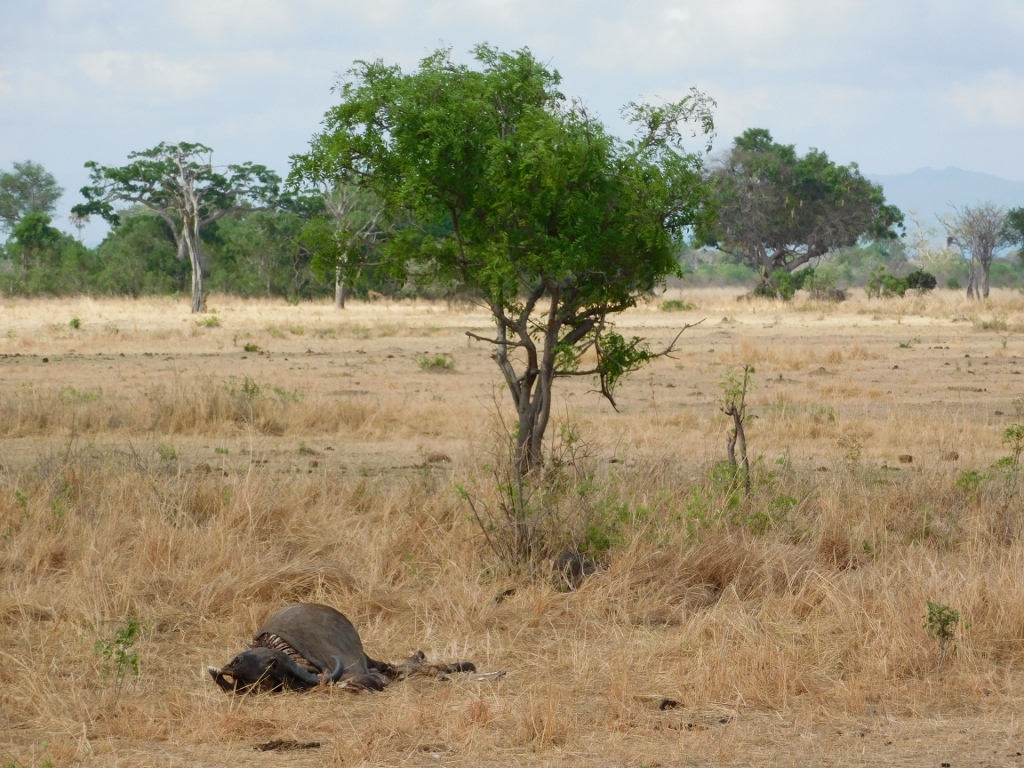 Remains of an African buffalo
Remains of an African buffalo
Then we saw a large herd of African buffalos heading towards the watering hole. We were certainly not the only ones who came here and saw them now, and in the photo below you can notice that there were different types of vehicles for touring the national park.
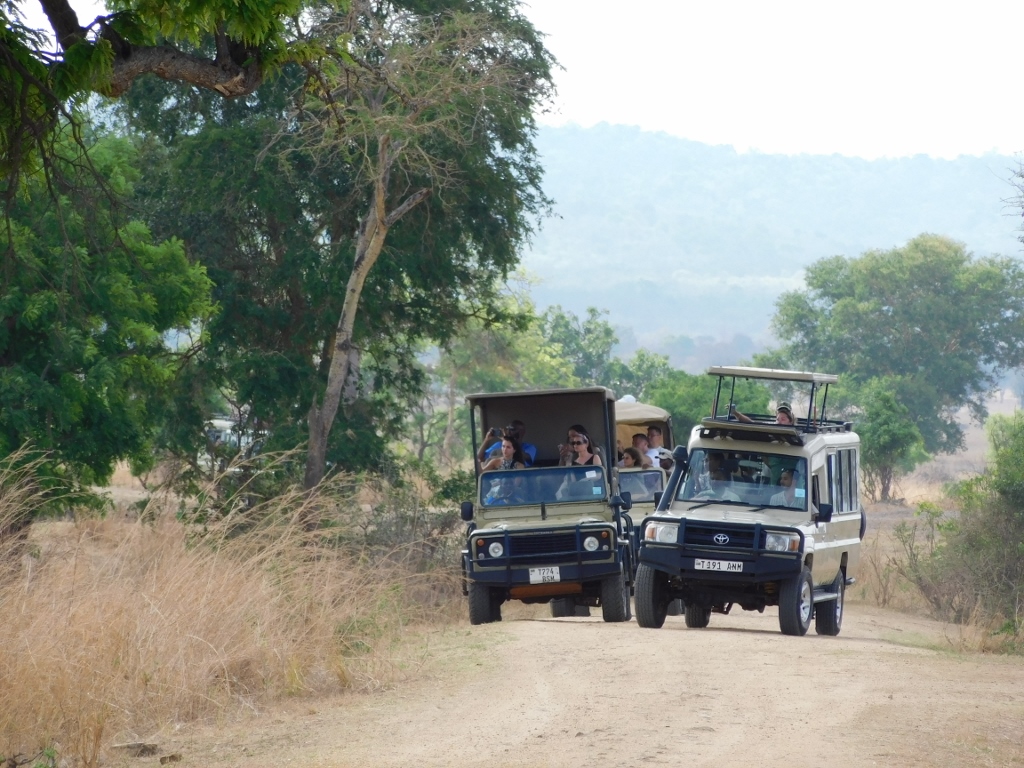 Visitors of the national park in their vehicles
Visitors of the national park in their vehicles
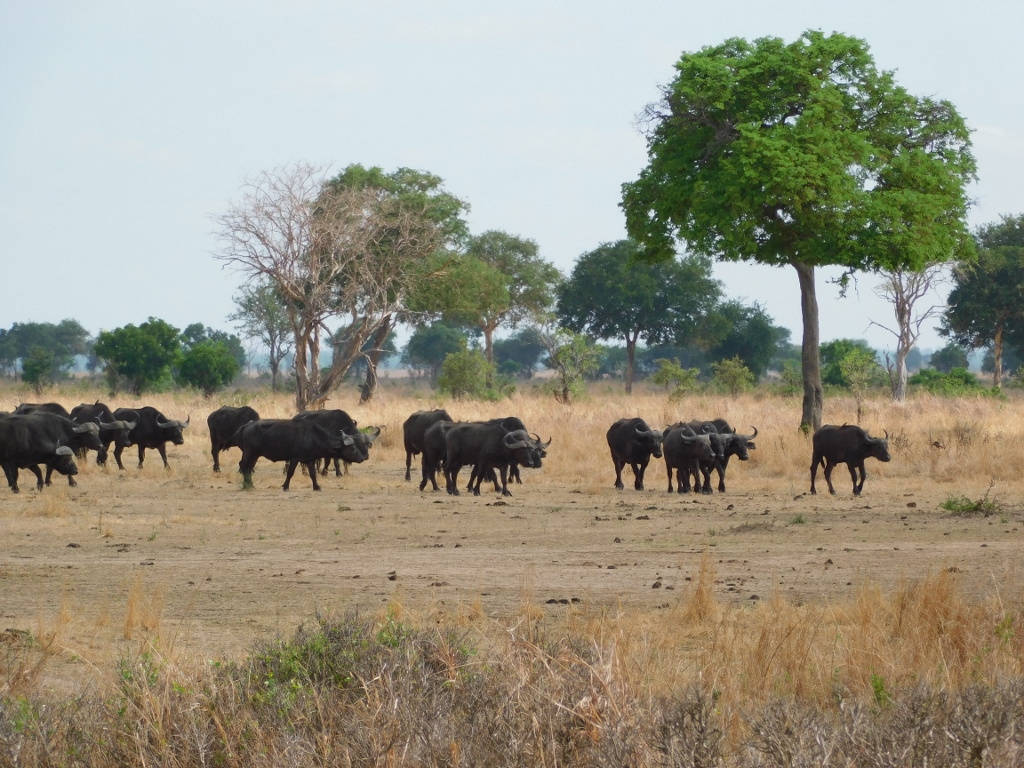 African buffalo herd in the Mikumi National Park
African buffalo herd in the Mikumi National Park
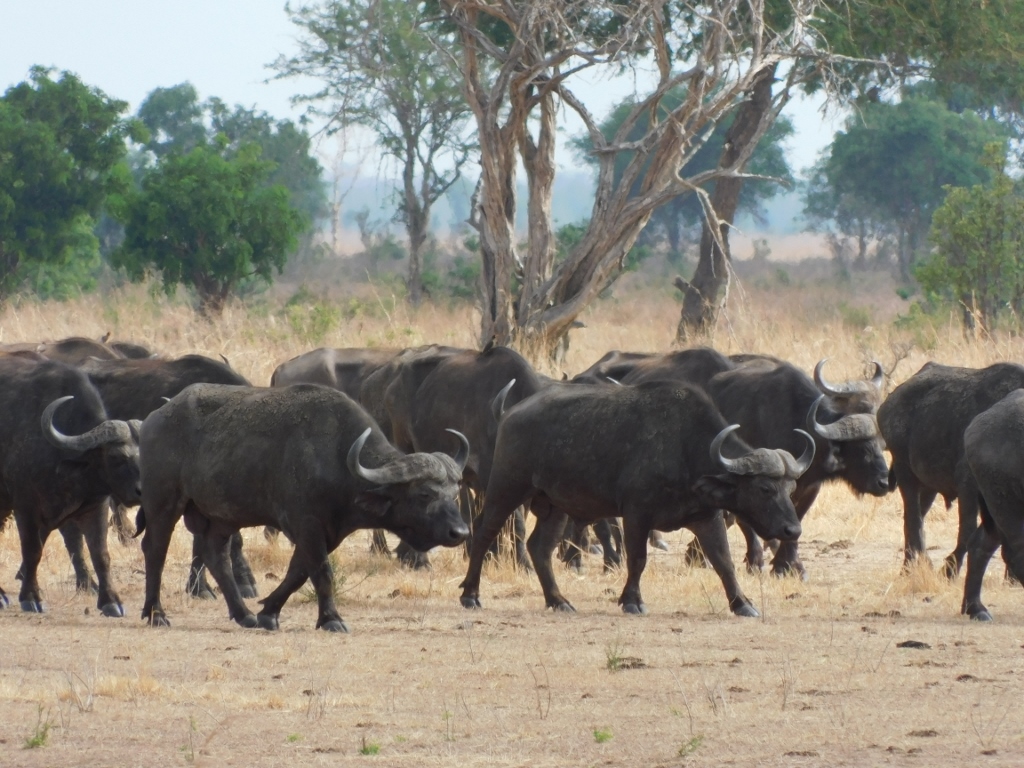 African buffalo herd in the Mikumi National Park
African buffalo herd in the Mikumi National Park
I find the impalas seen in the next two photographs particularly cute.
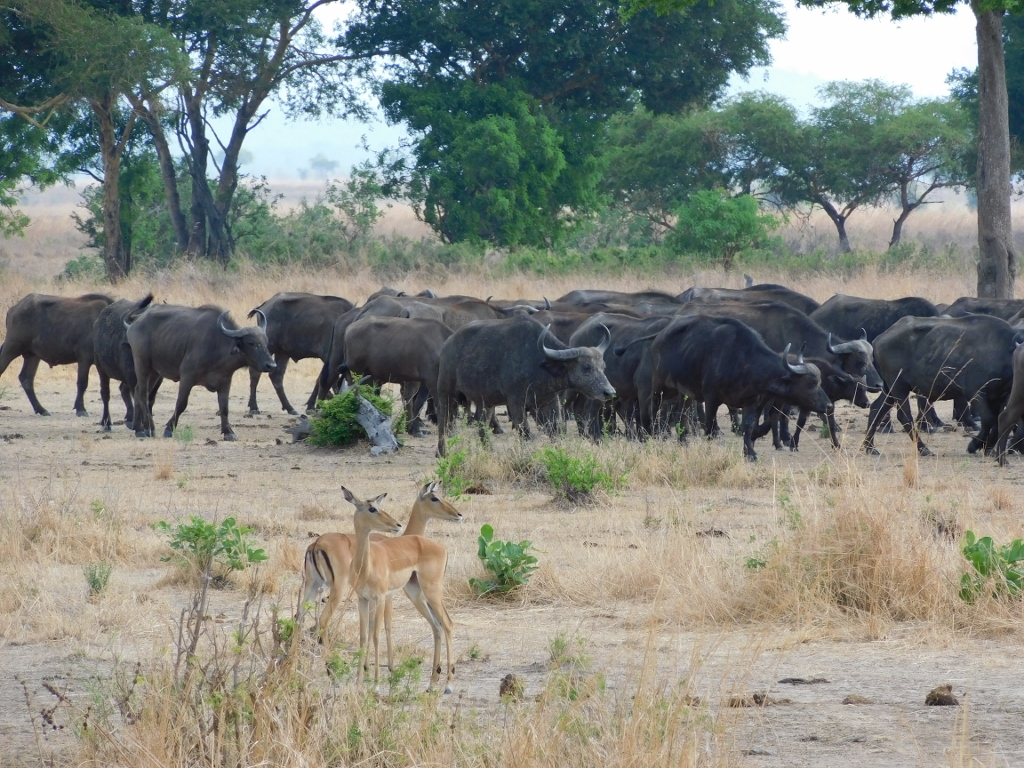 African buffalo herd and impalas in the Mikumi National Park
African buffalo herd and impalas in the Mikumi National Park
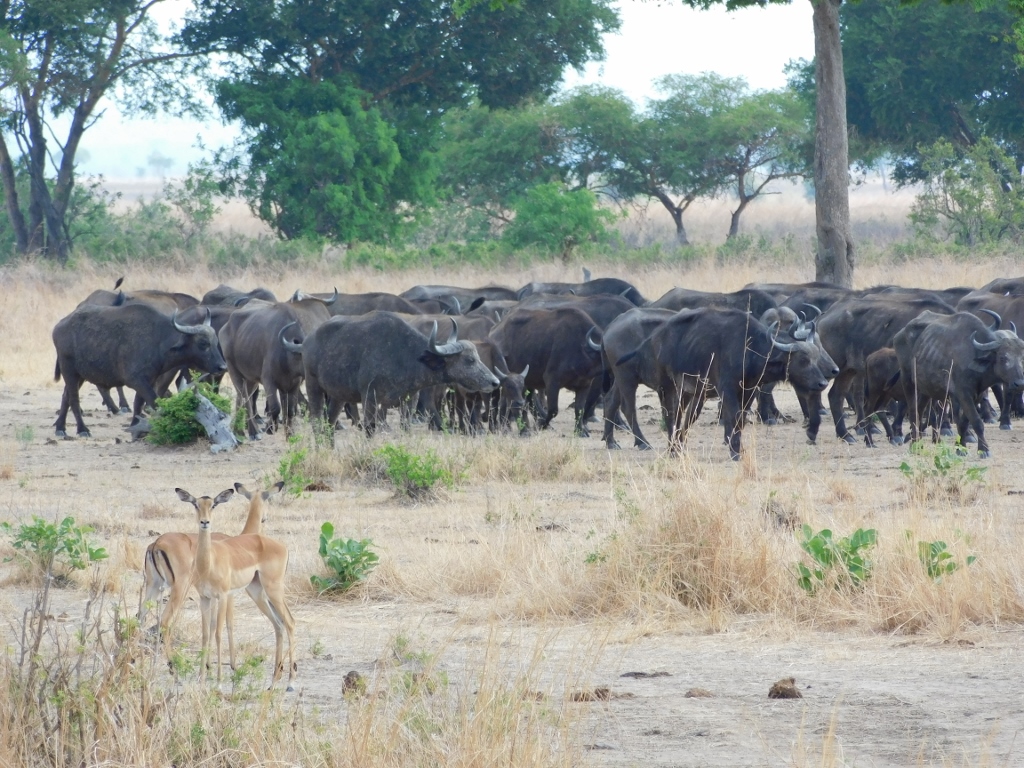 African buffalo herd and impalas in the Mikumi National Park
African buffalo herd and impalas in the Mikumi National Park
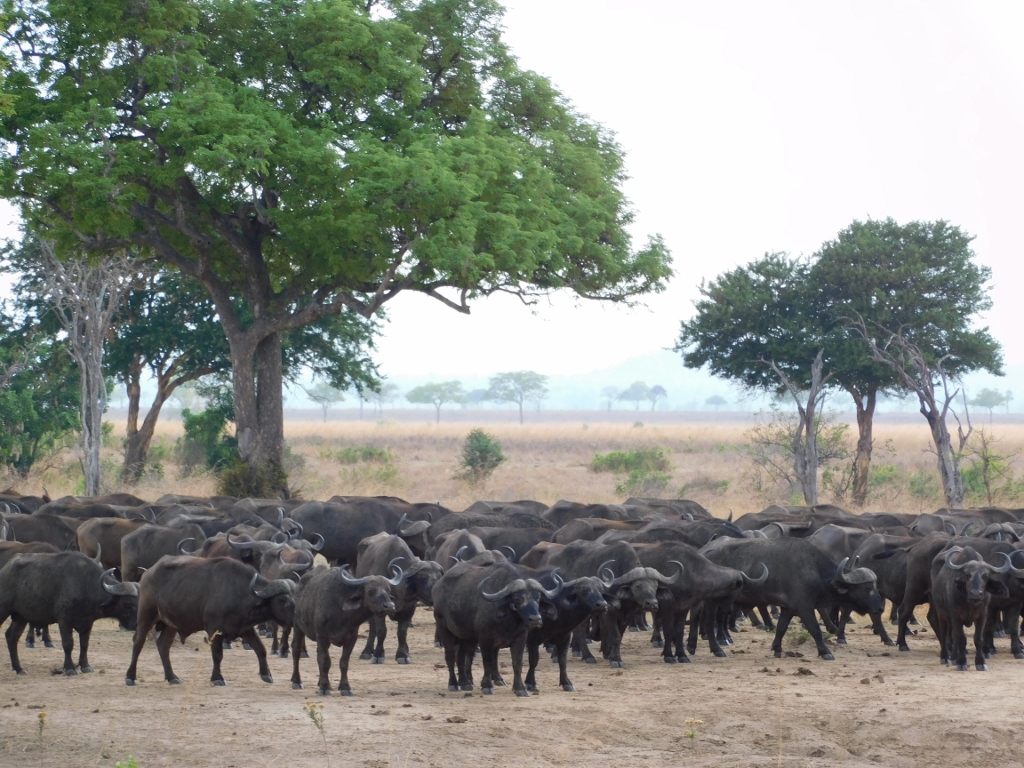 African buffalo herd in the Mikumi National Park
African buffalo herd in the Mikumi National Park
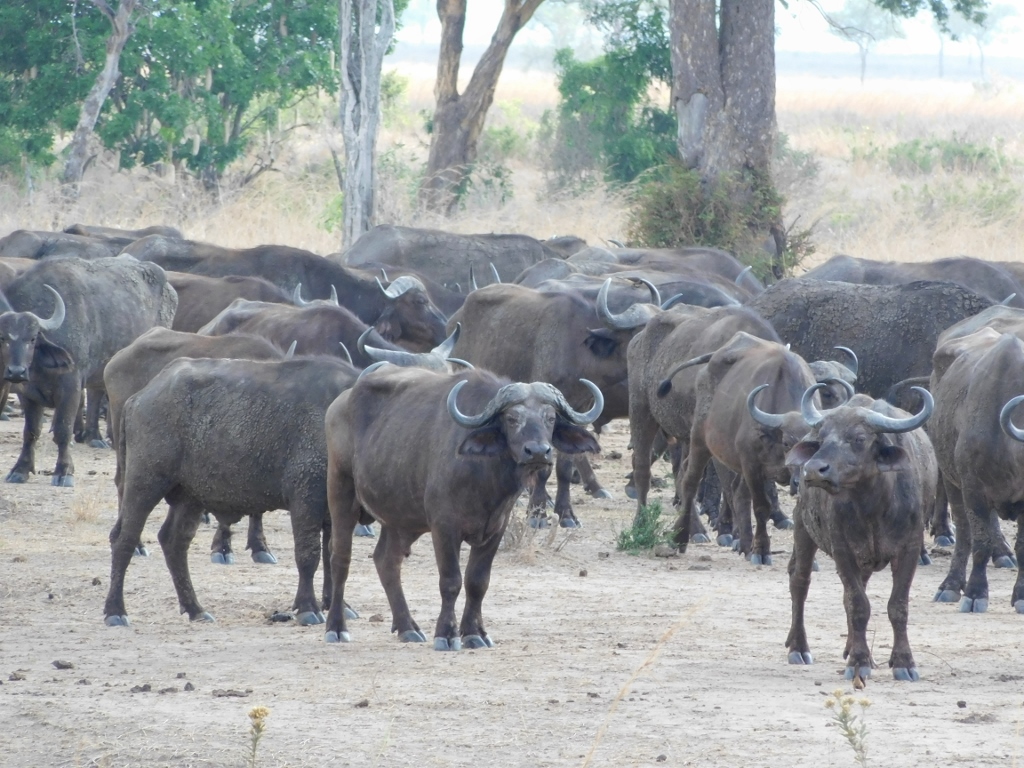 African buffalo herd in the Mikumi National Park
African buffalo herd in the Mikumi National Park
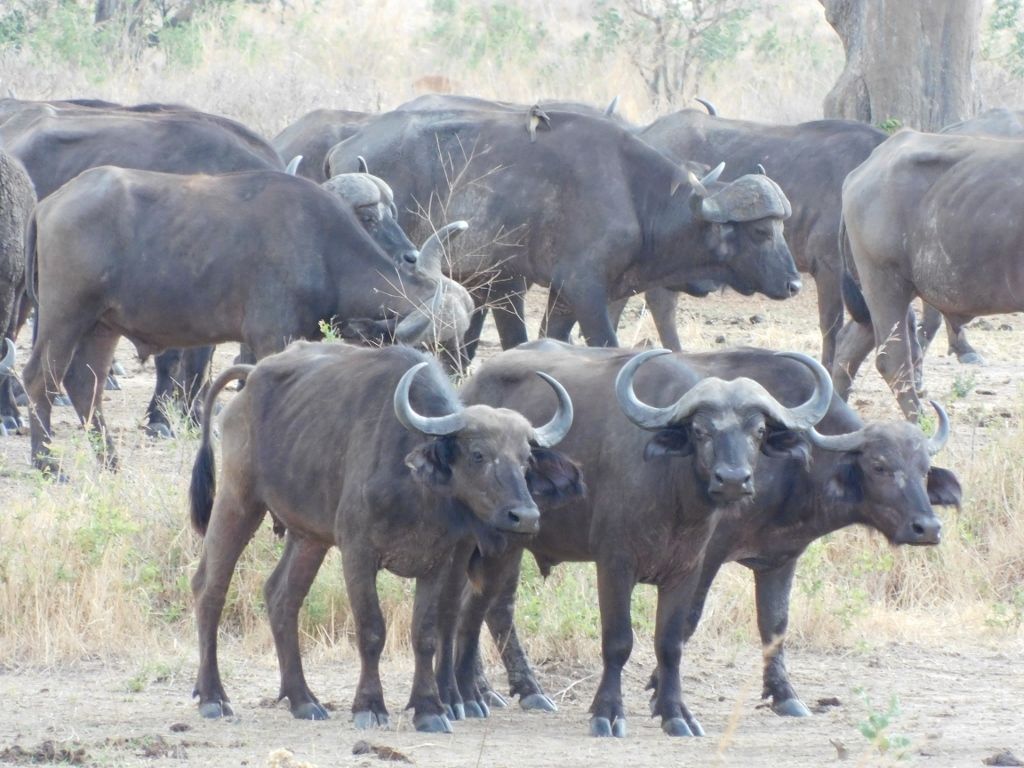 African buffalo herd in the Mikumi National Park
African buffalo herd in the Mikumi National Park
We continued with the drive and the road led us through different parts where there were a little more trees, or we went down to a dry river bed, then uphill again, and then we came to a flat part with sparse and low trees.
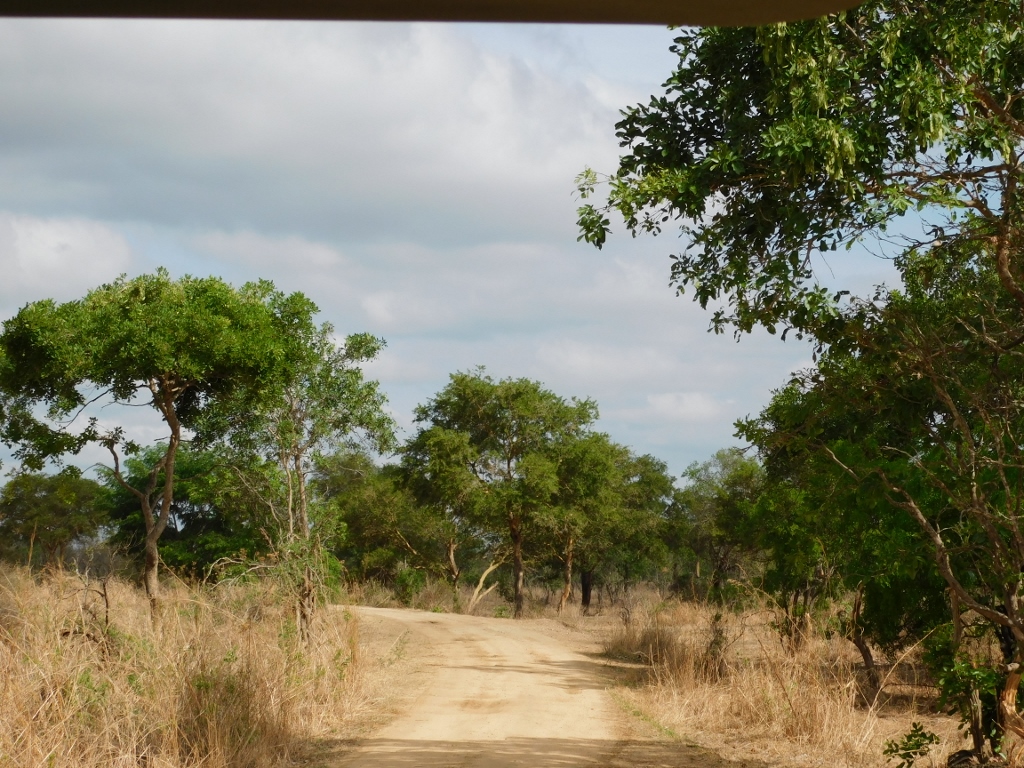 Mikumi National Park
Mikumi National Park
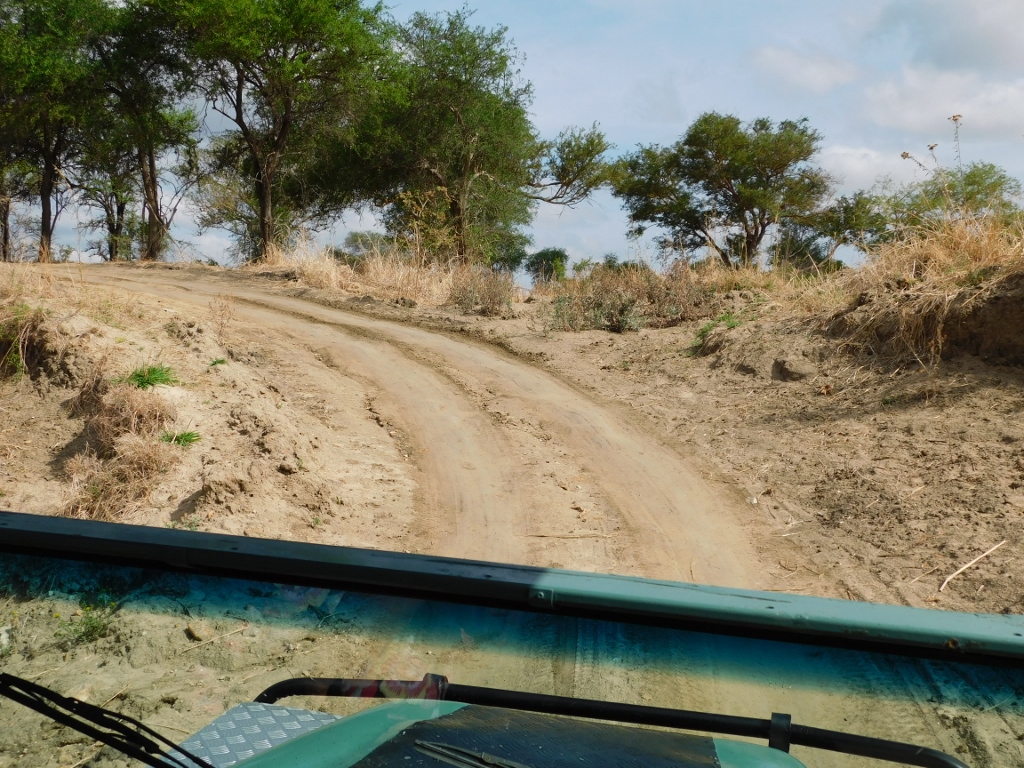 Mikumi National Park
Mikumi National Park
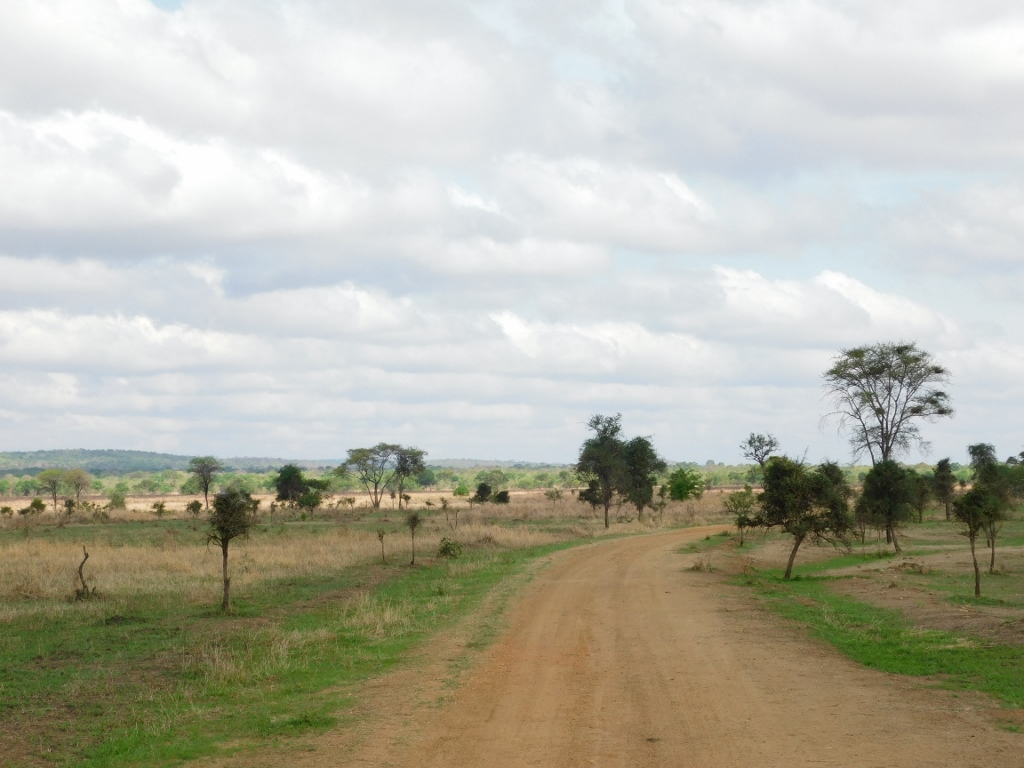 Mikumi National Park
Mikumi National Park
And then we came to something that was a huge surprise for me.